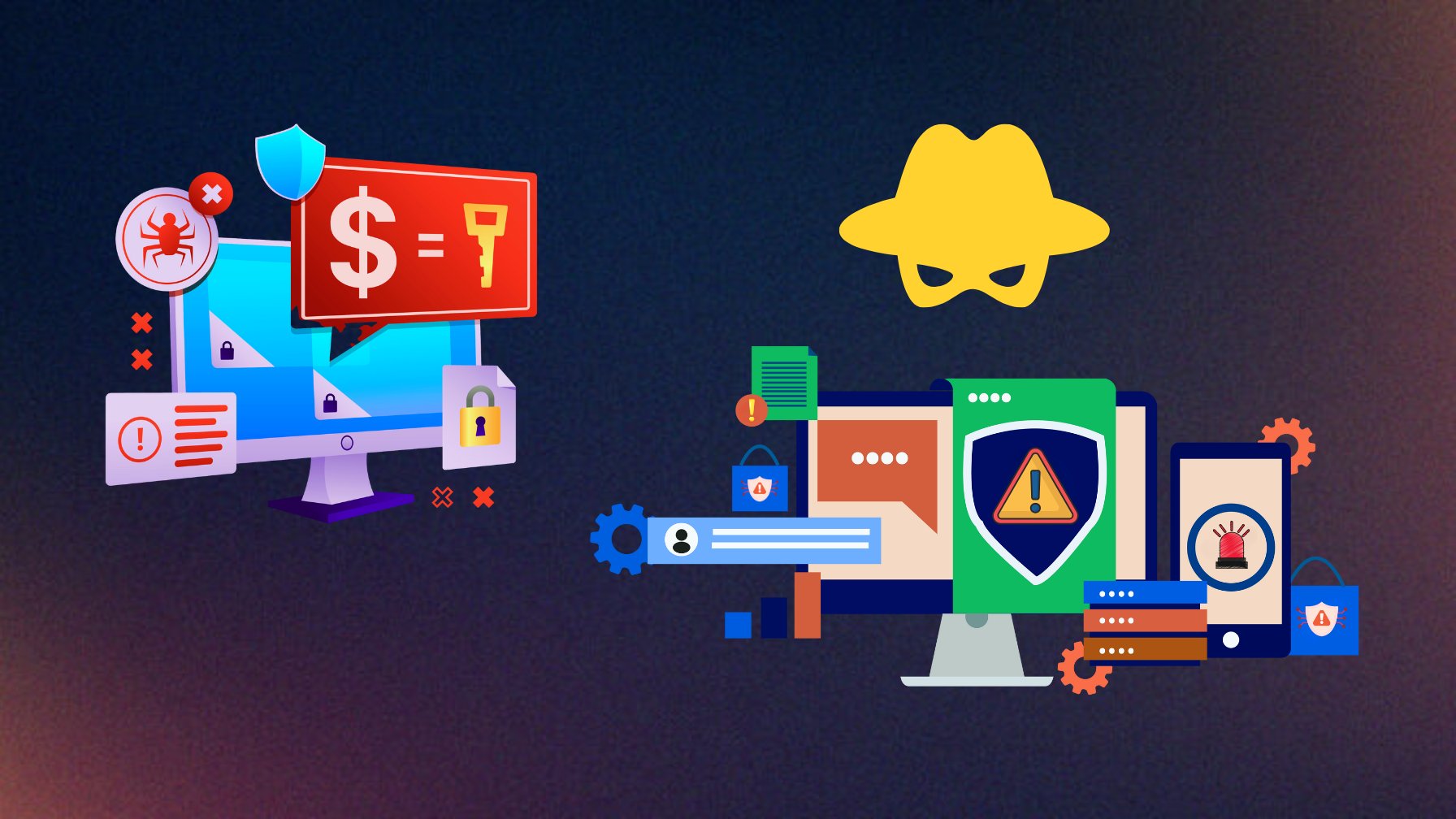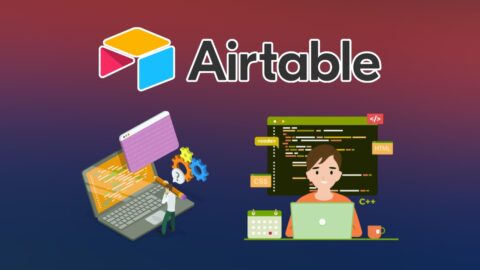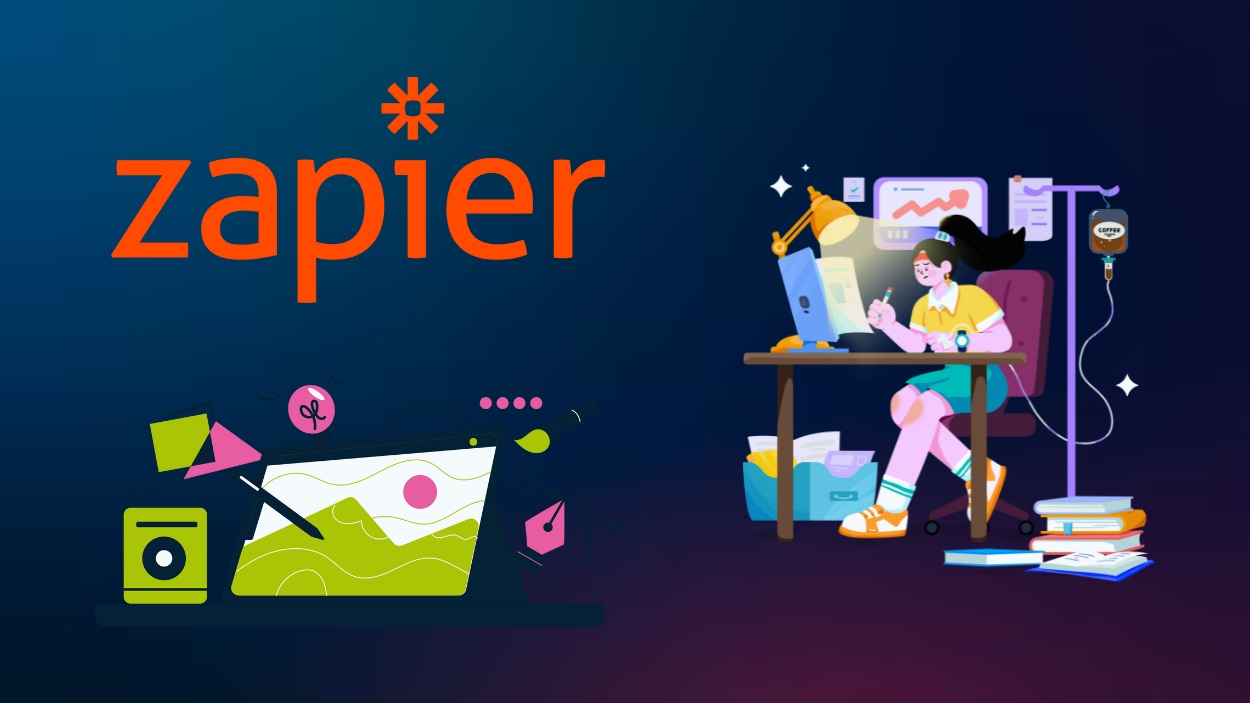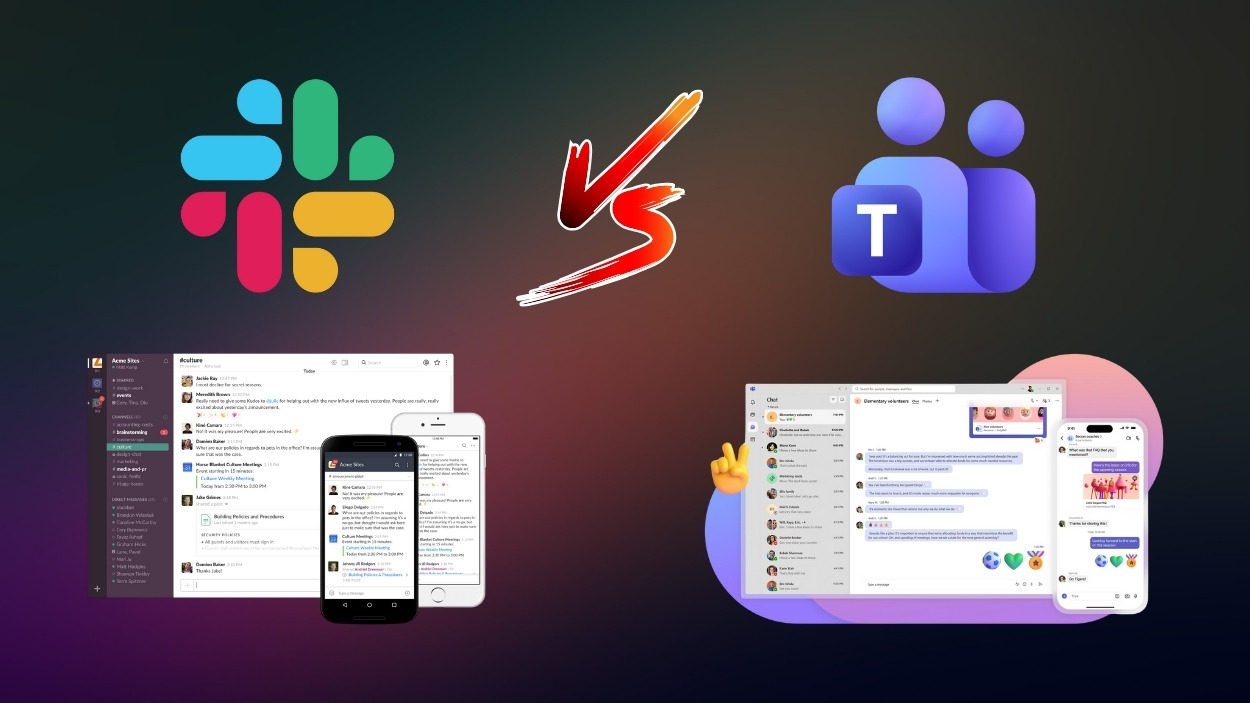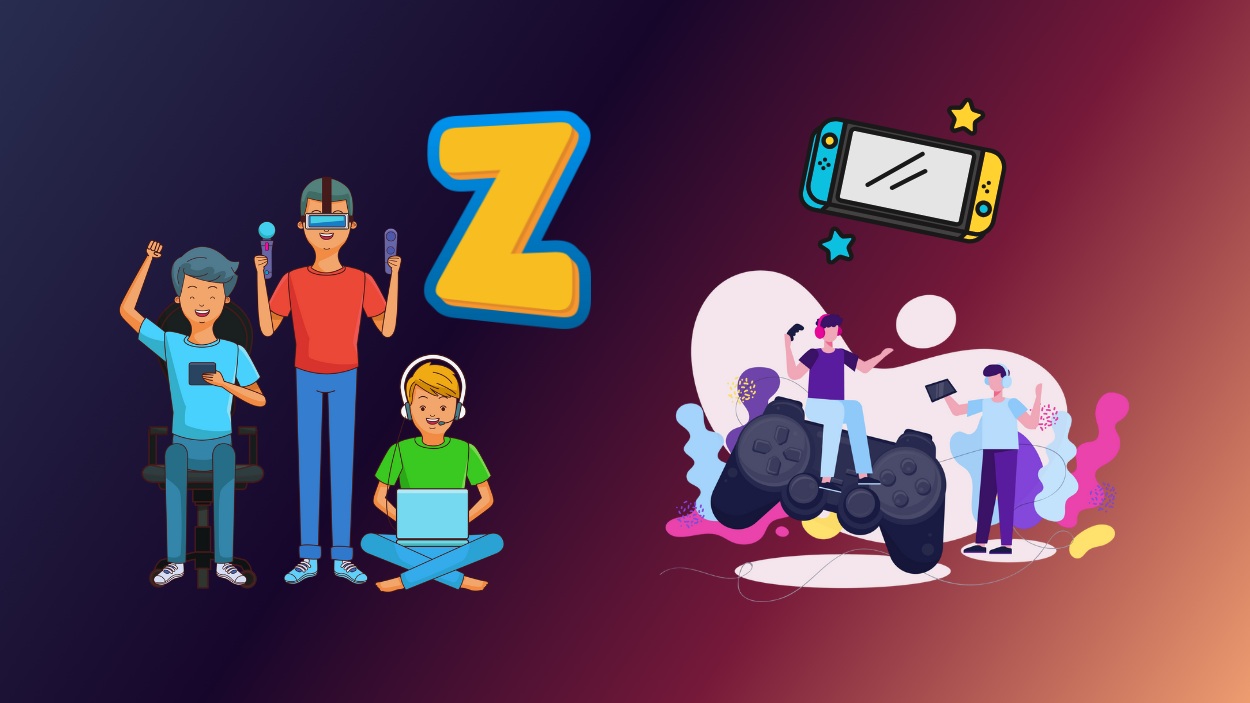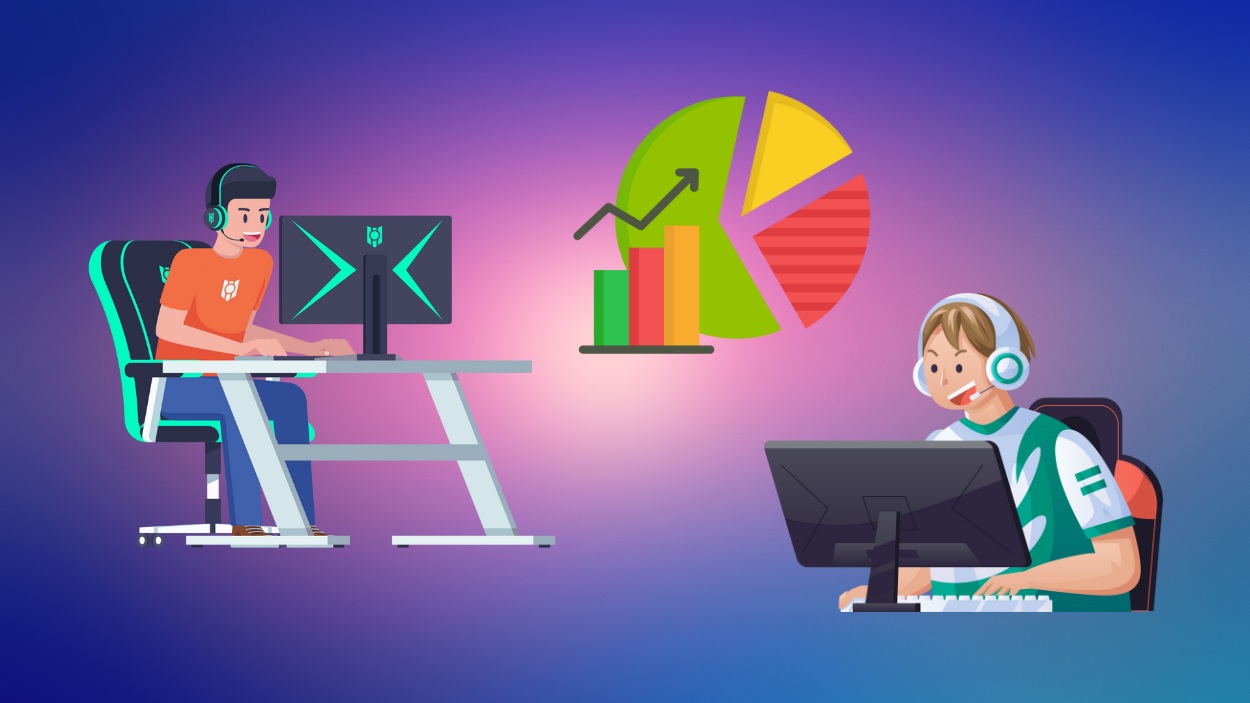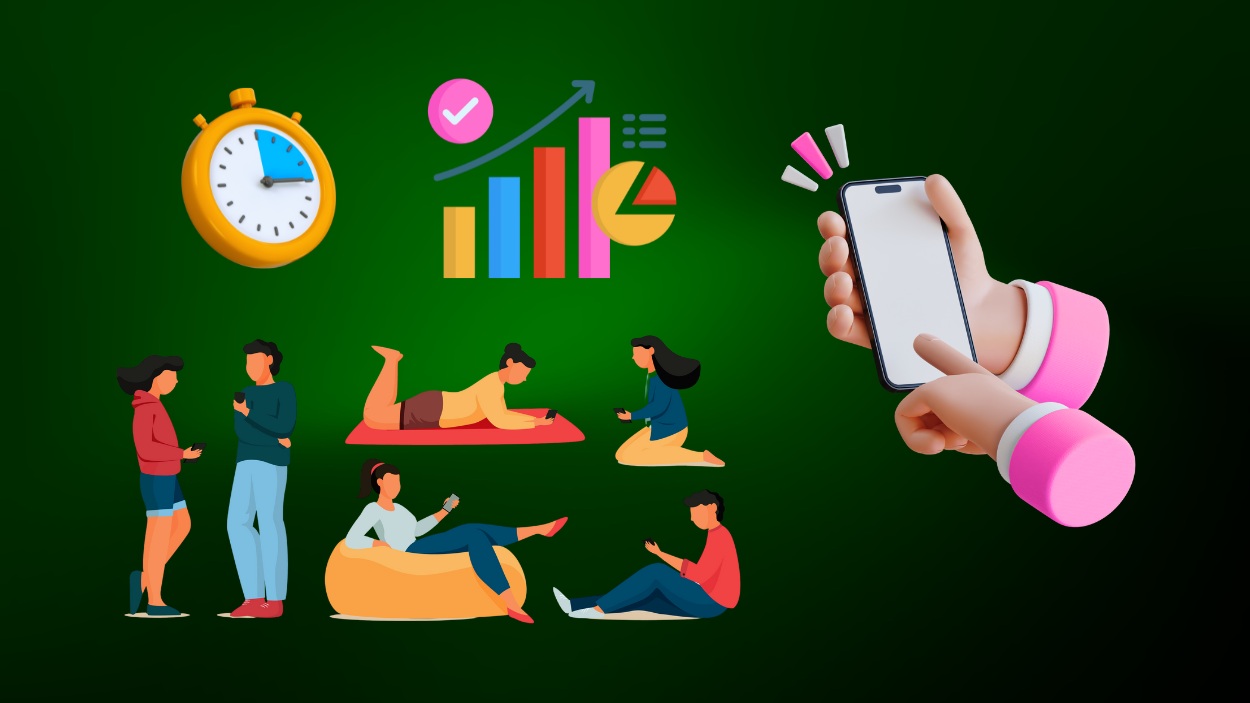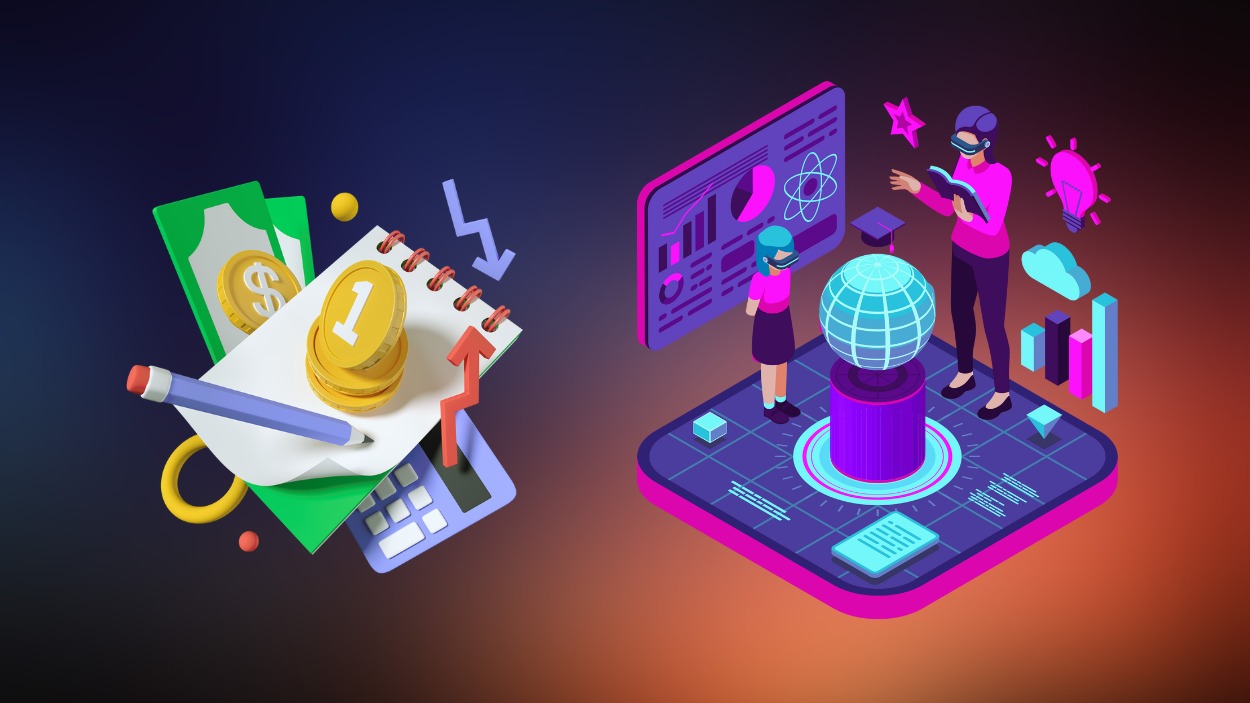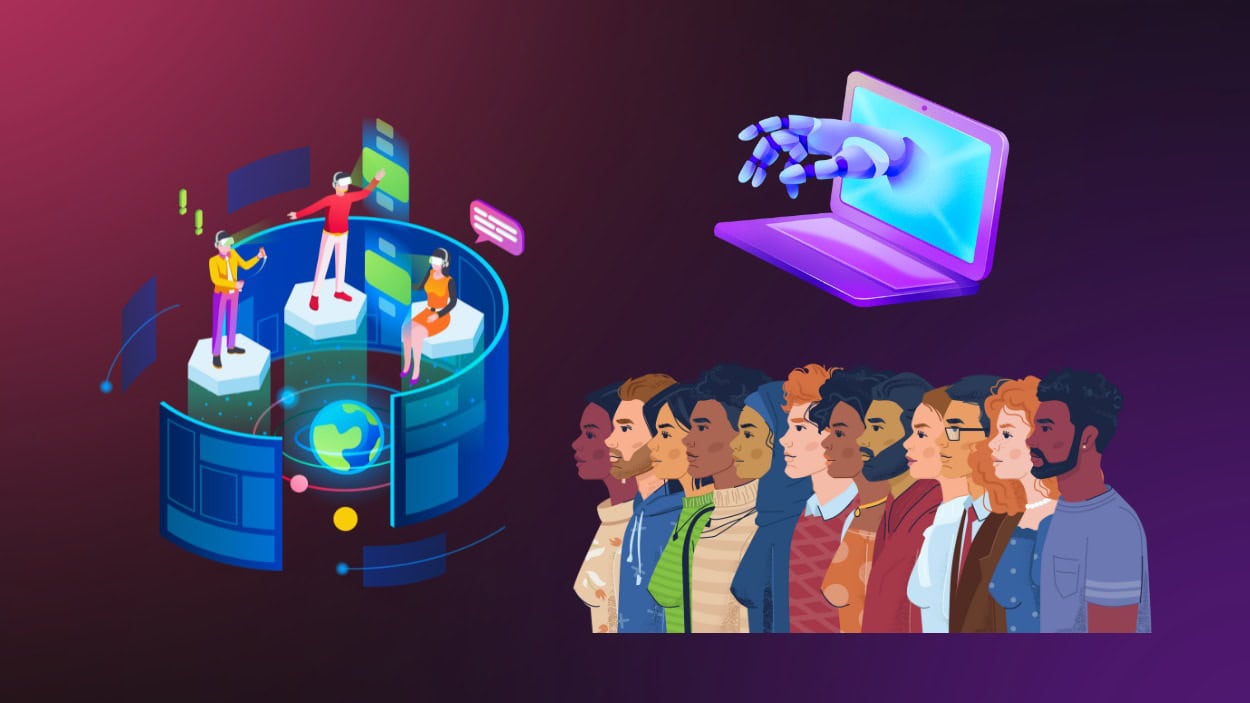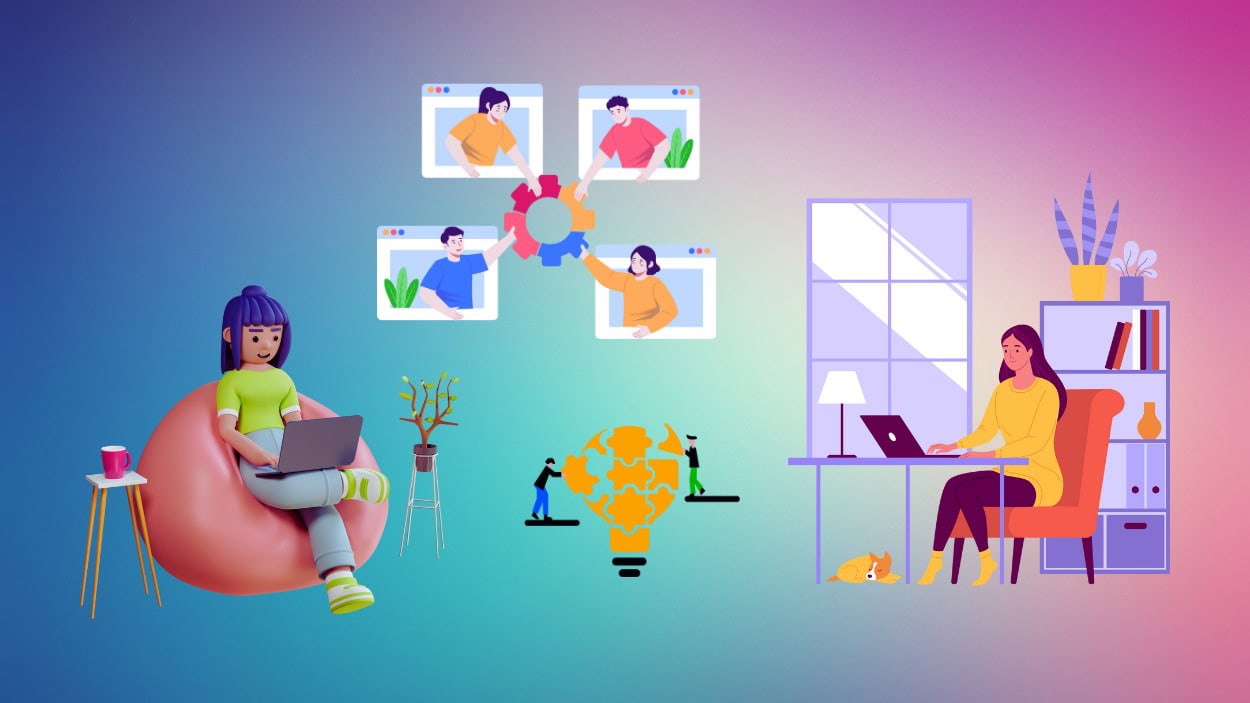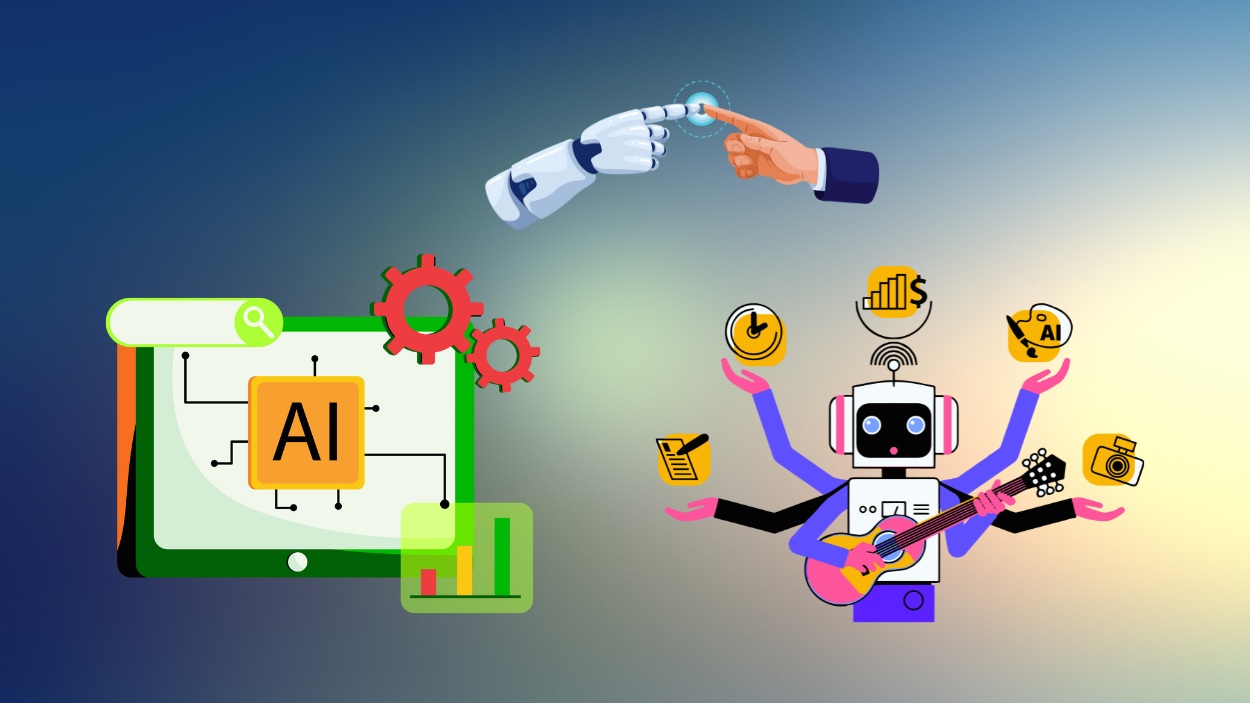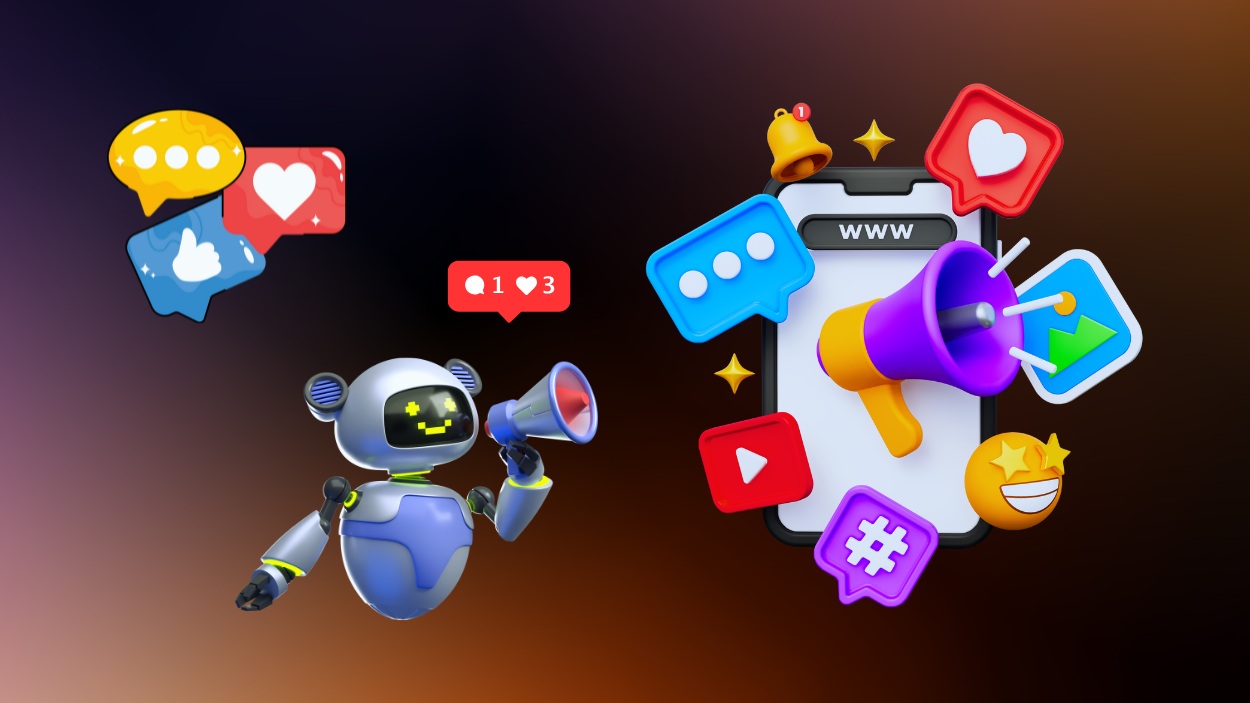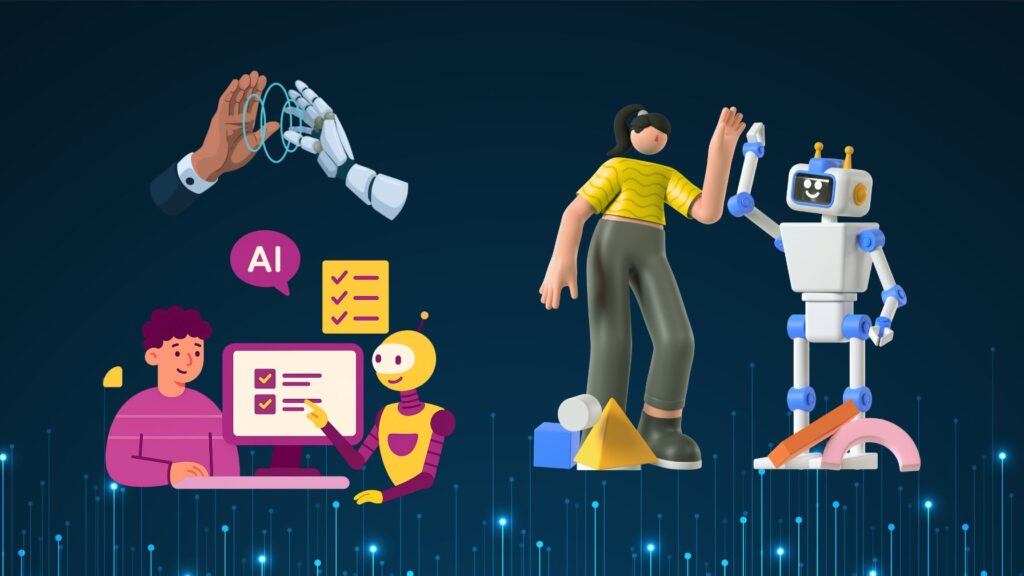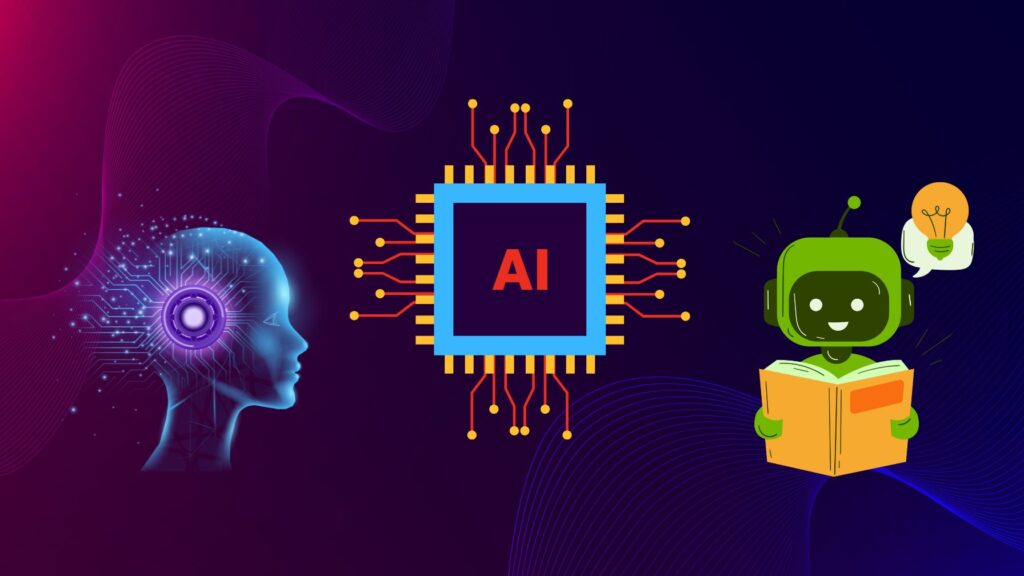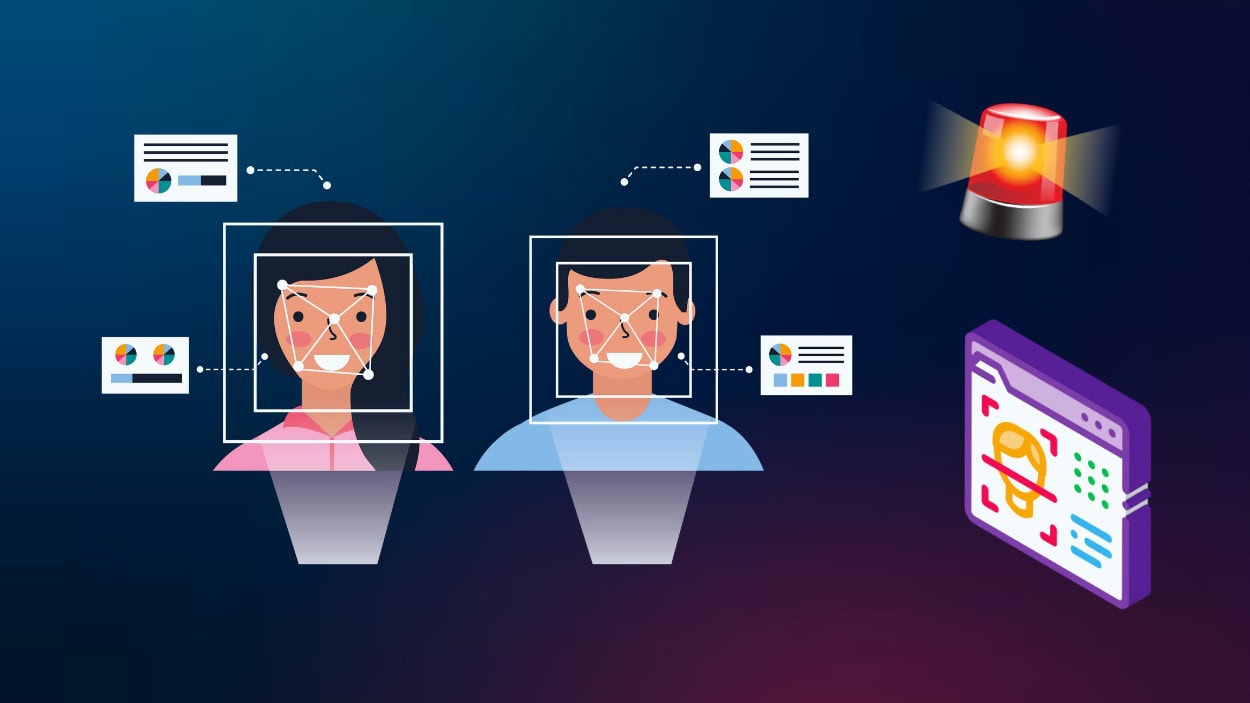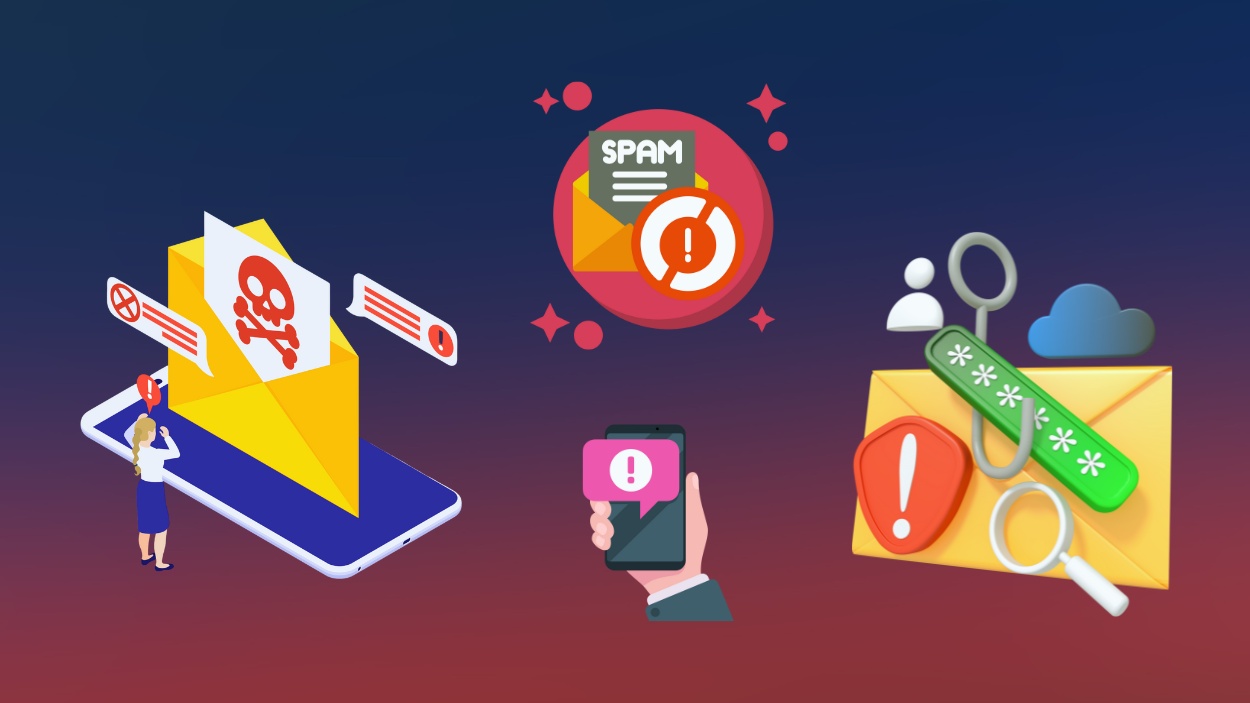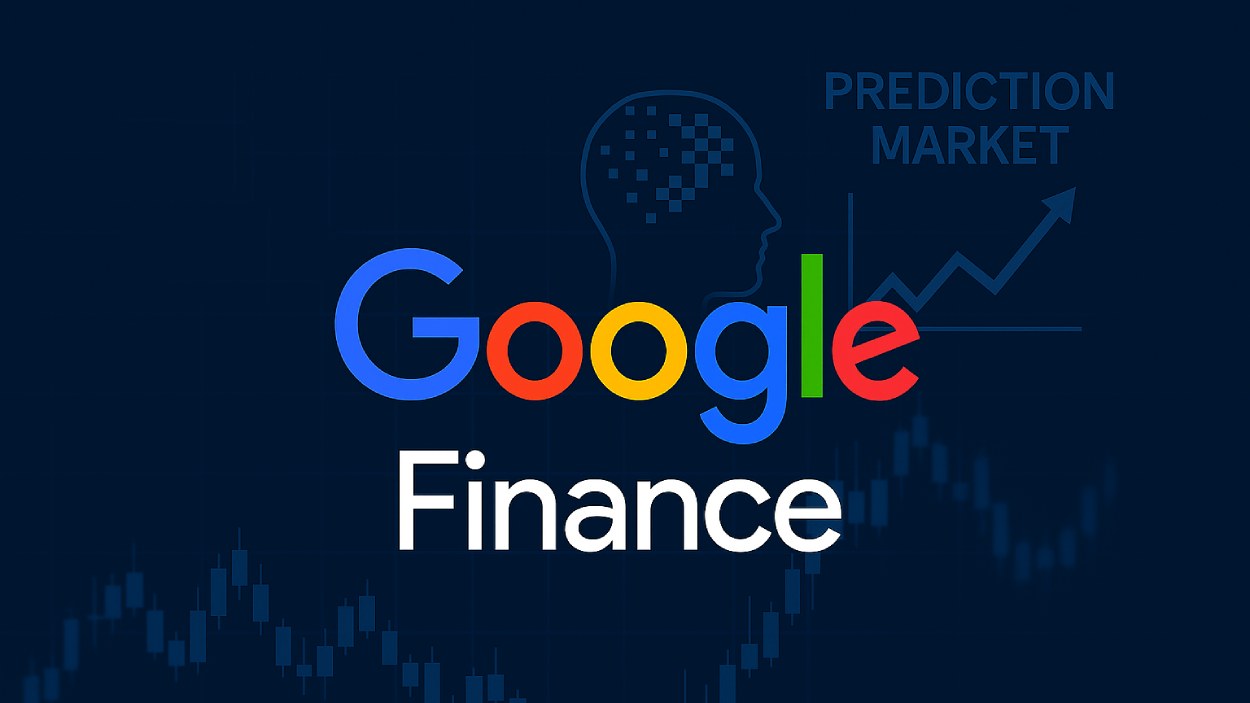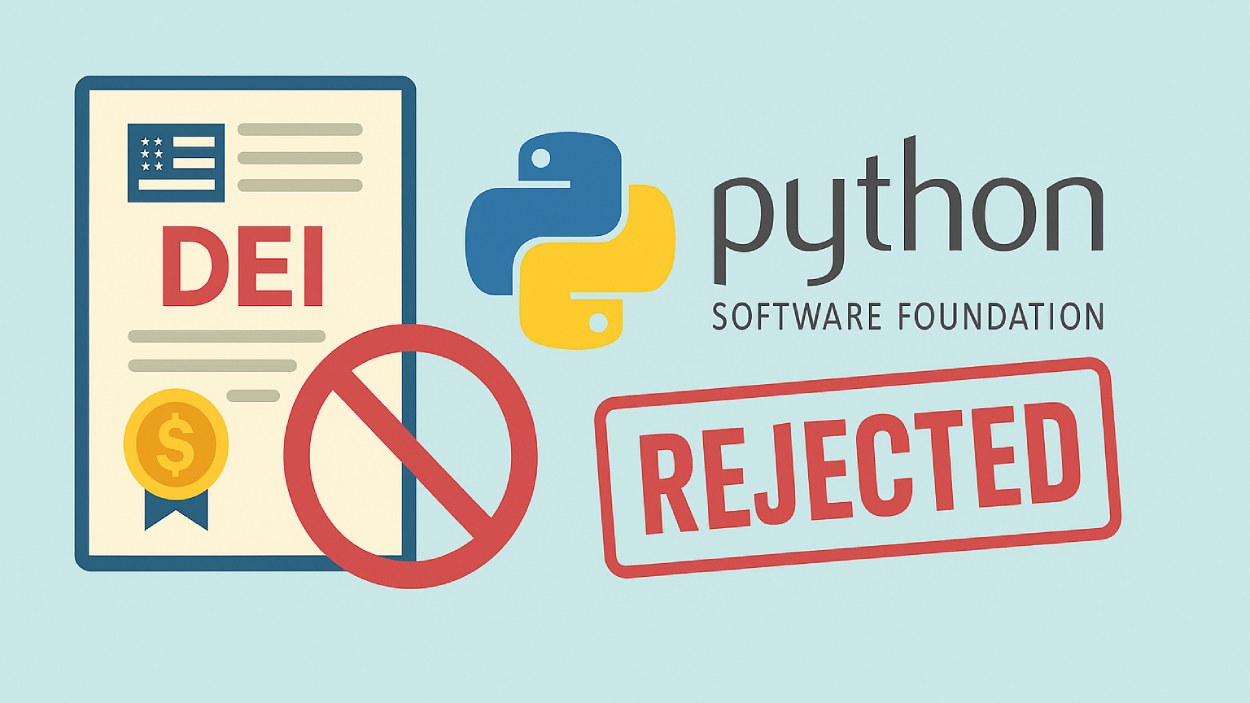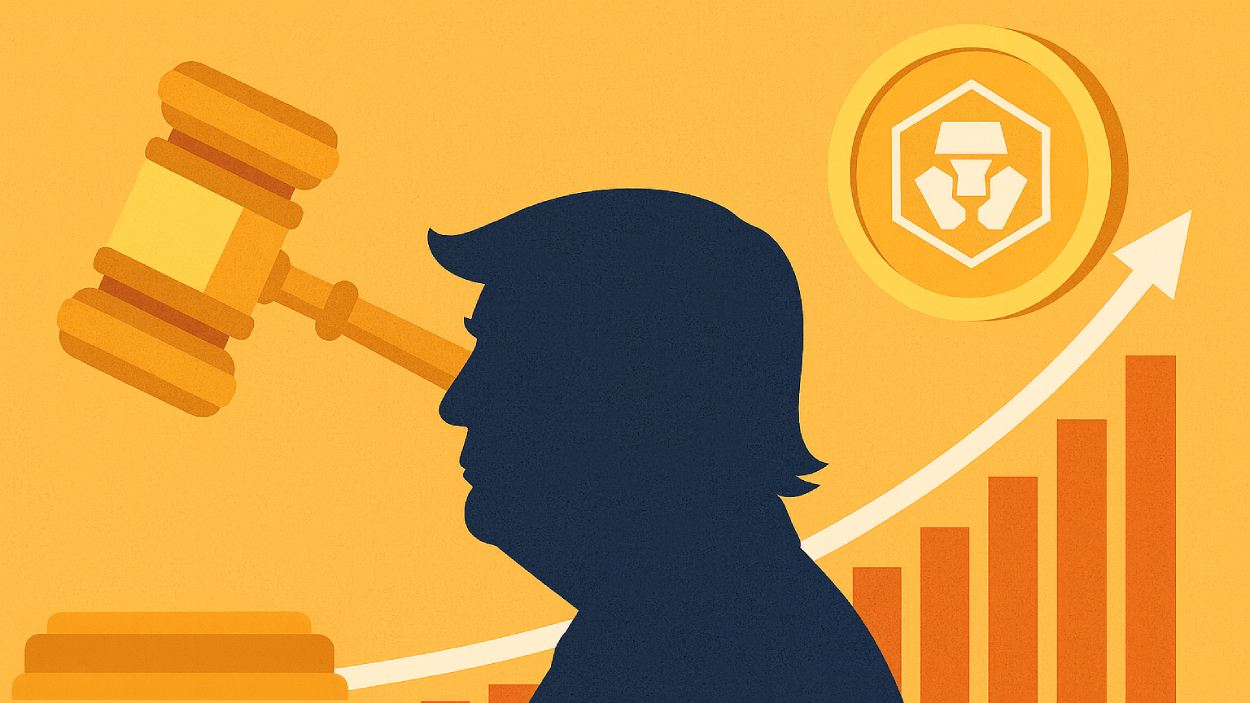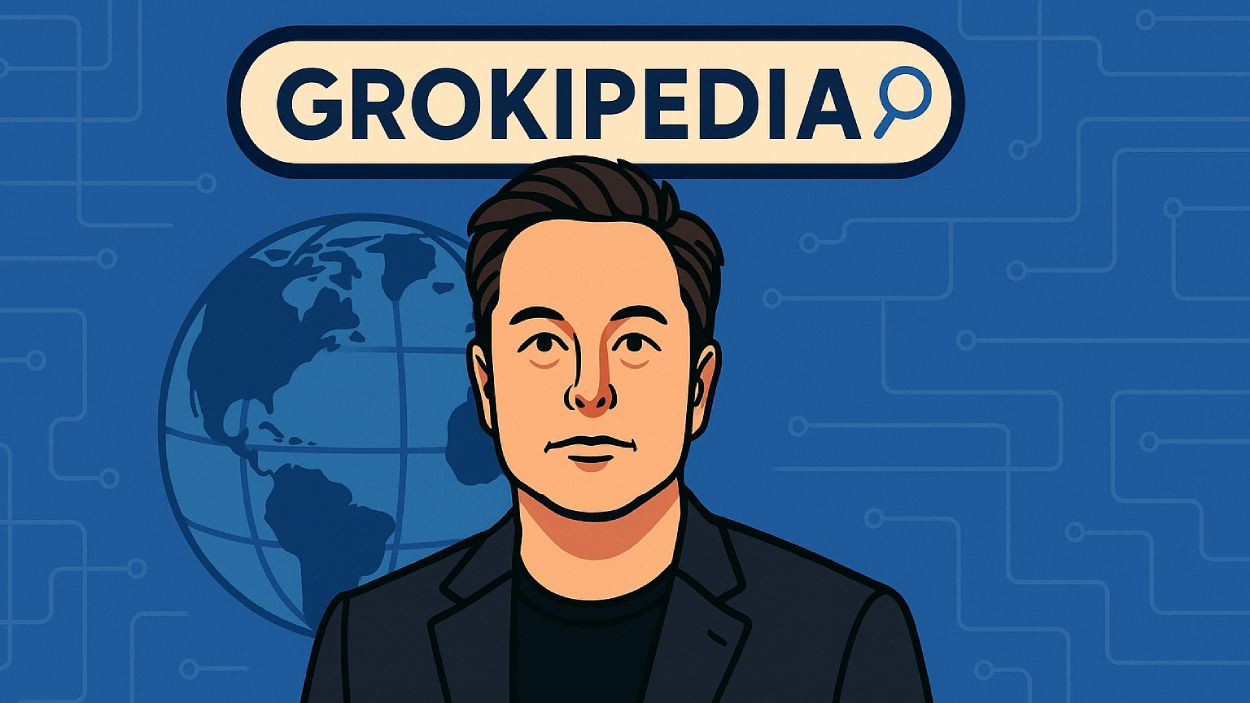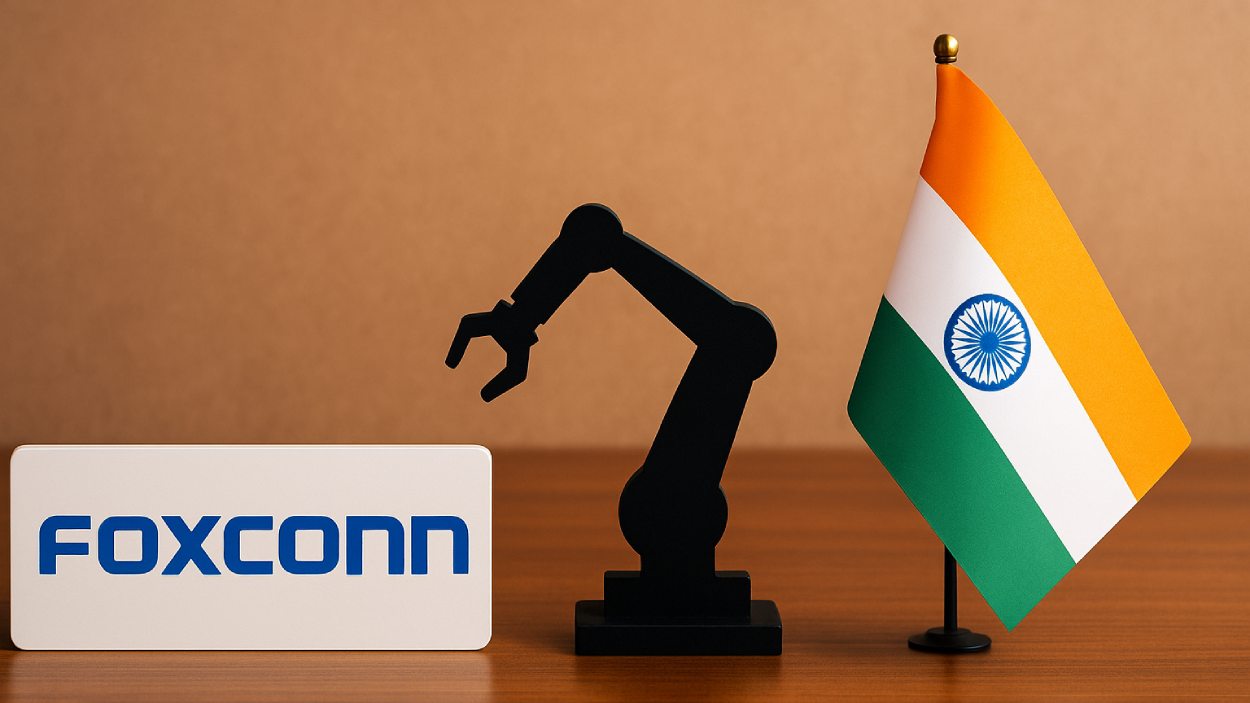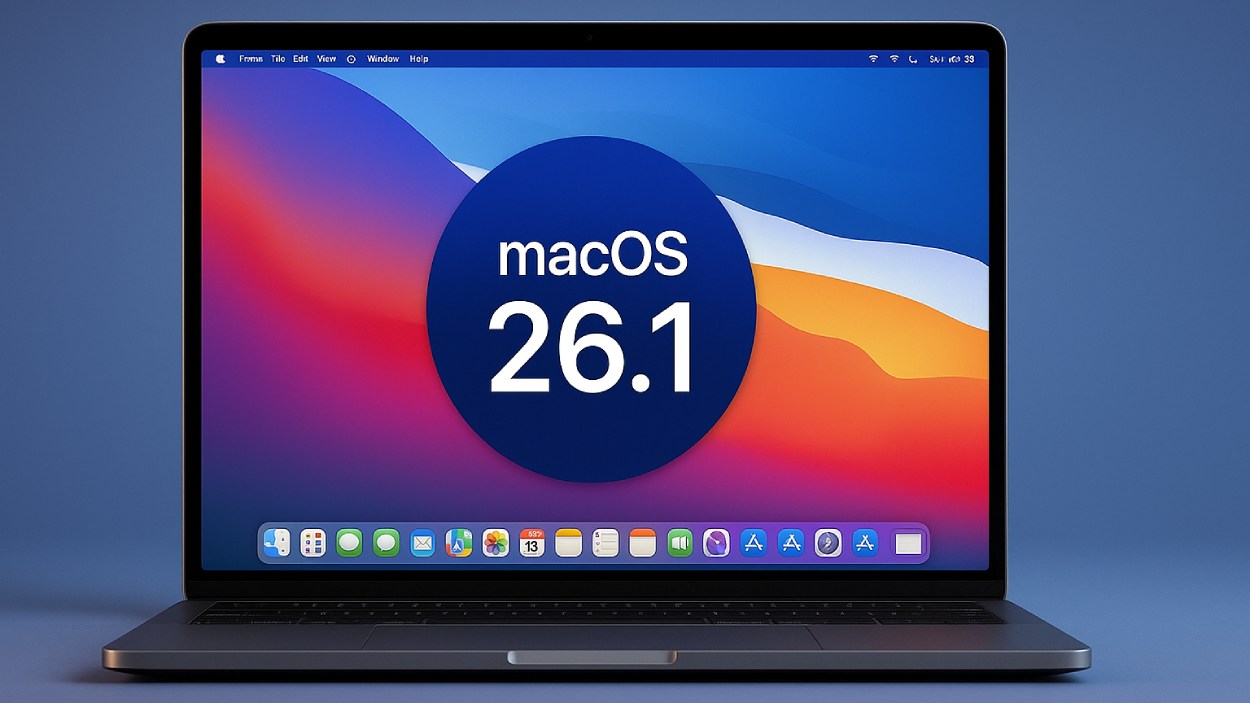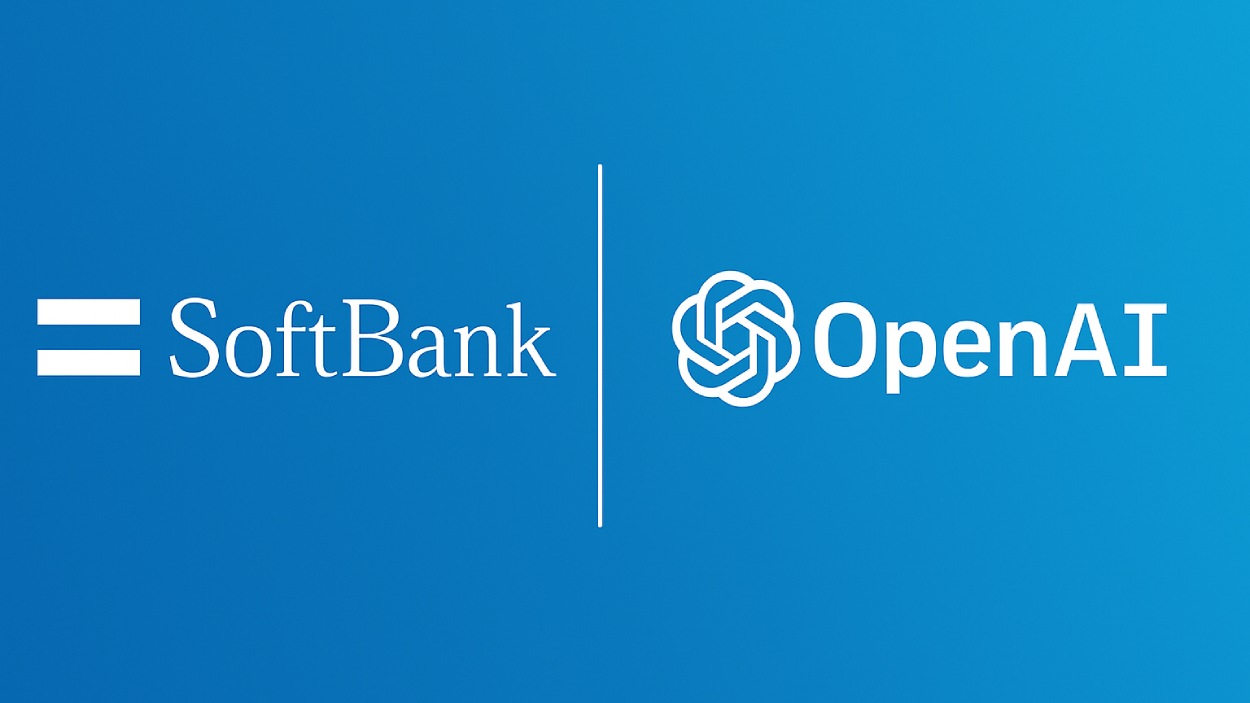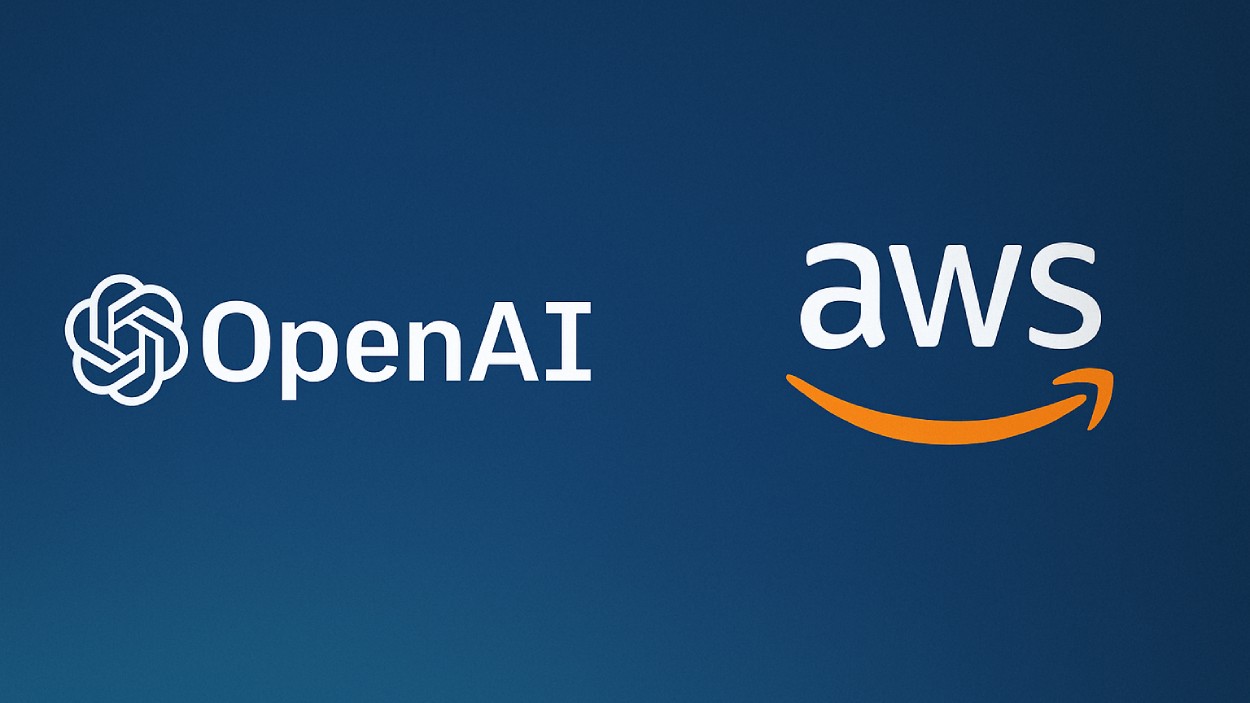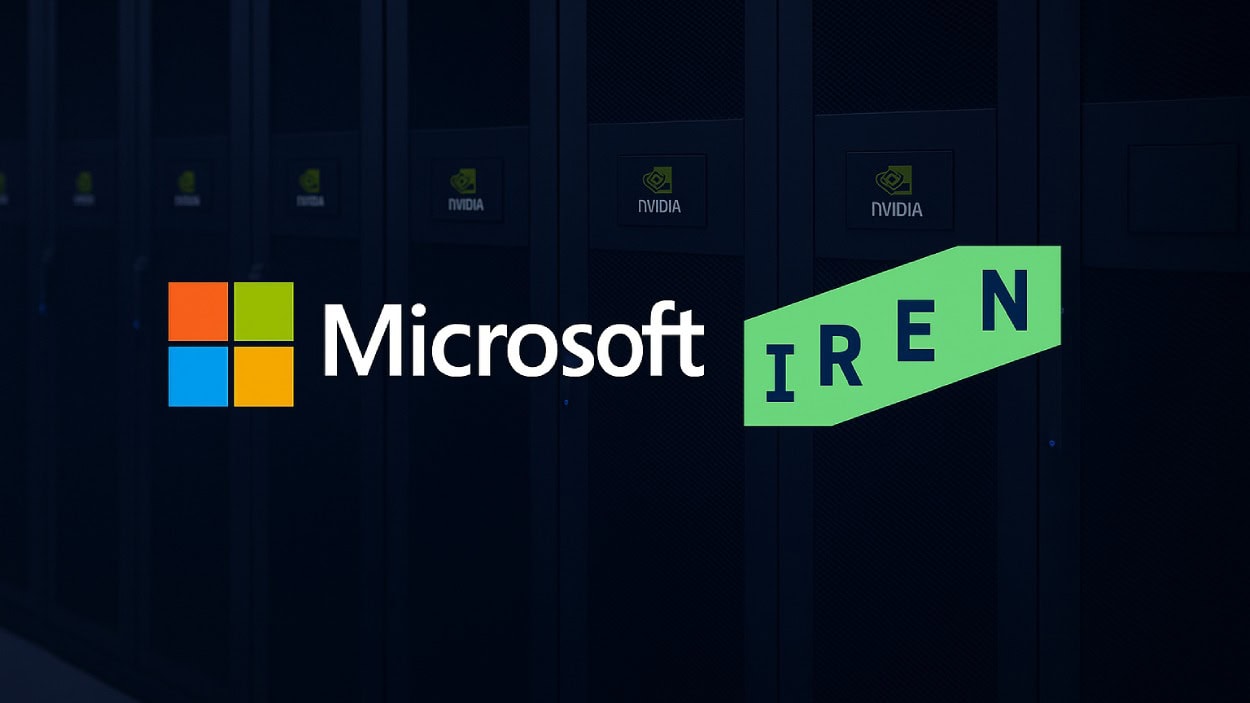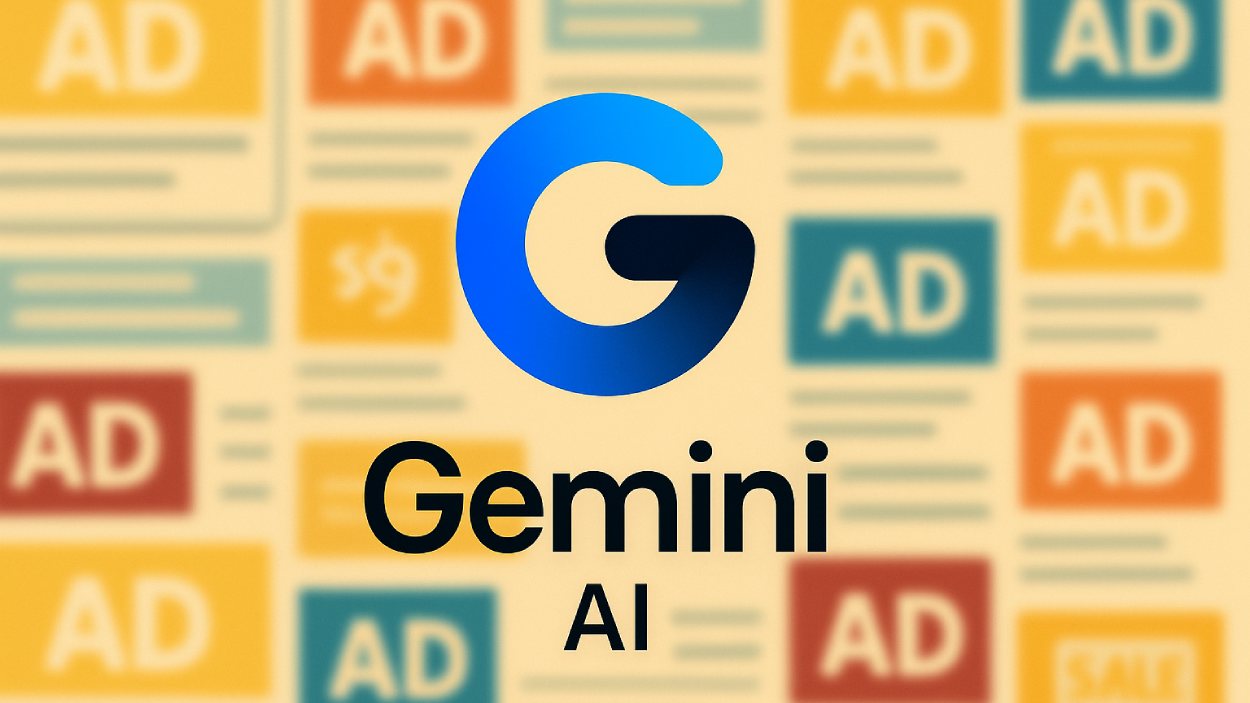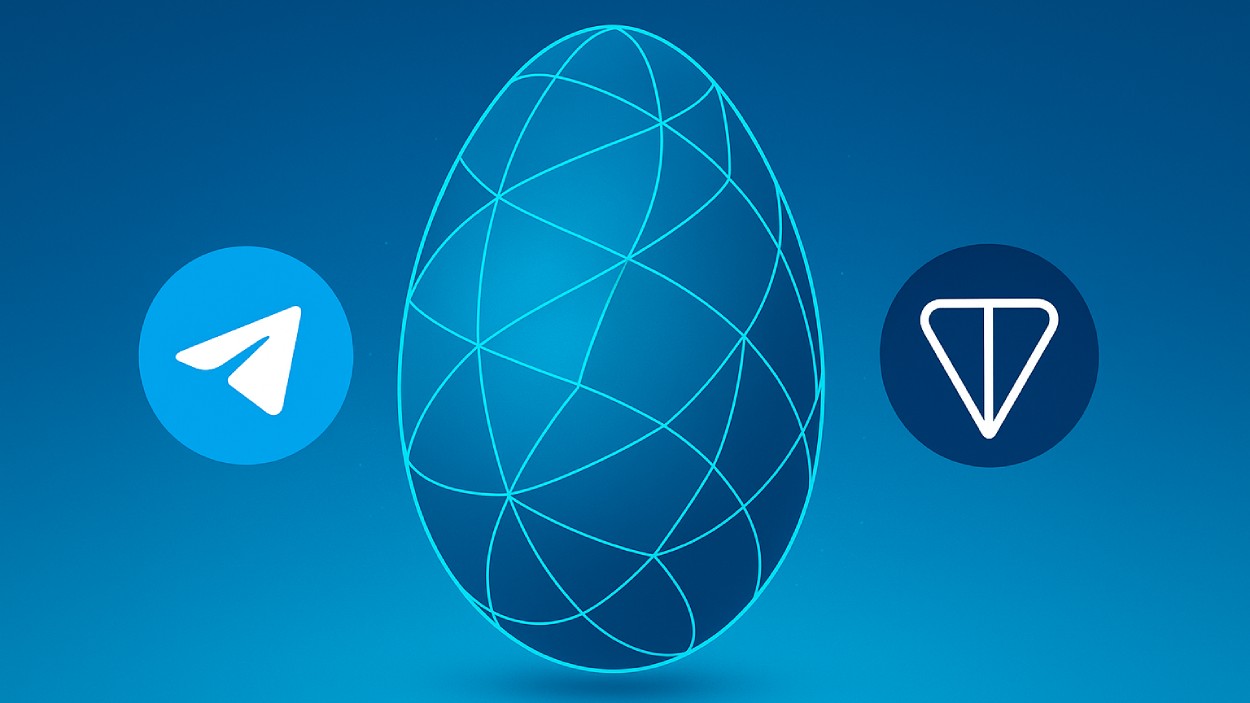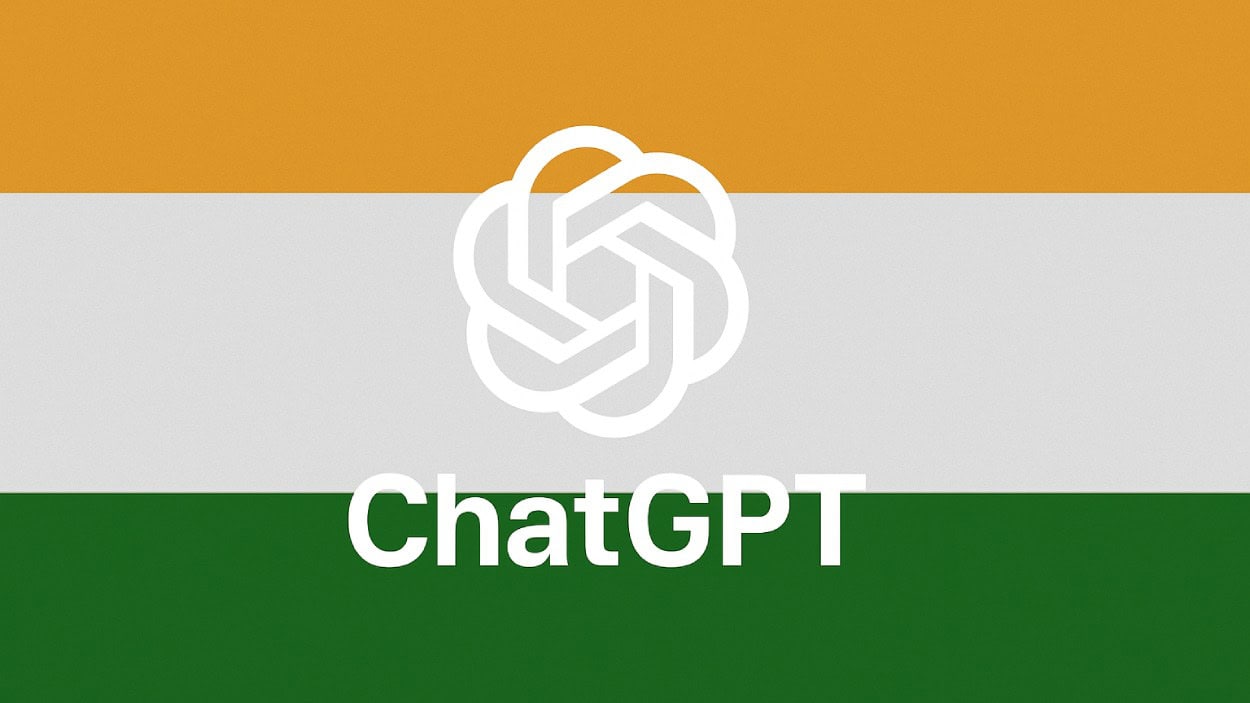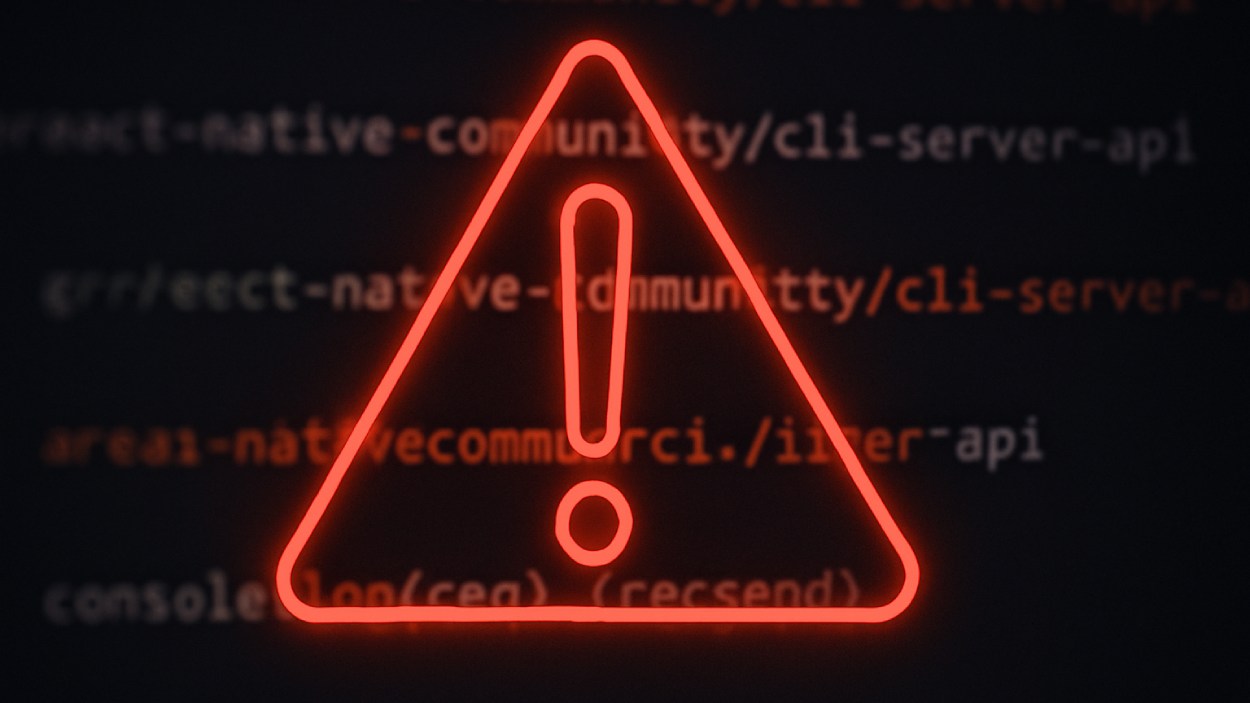In early 2025, Mark, a former logistics manager in Ohio, found himself navigating an unfamiliar path, training to become an AI model auditor. Two years ago, the term would’ve baffled him. Today, it’s his livelihood. His journey reflects a quiet revolution sweeping the global job market: the rise of AI not as a job destroyer, but a job creator.
As automation reshapes legacy systems and industries rush to modernize, AI is not just replacing tasks; it’s creating new work, new roles, and new economic lifelines. This article brings together the most current statistics on how AI is generating jobs in 2025, across regions, sectors, and skill levels, while helping readers see the broader narrative emerging beneath the surface.
Editor’s Choice
- 97 million new jobs are expected to be created by AI globally by the end of 2025.
- The global AI employment rate in AI-related roles has grown by 26% year-over-year from 2024 to 2025, highlighting increasing demand across industries.
- In 2025, the average salary for AI engineers in the United States reached $153,000, a 9% increase from the previous year.
- 41% of Fortune 500 companies have launched internal AI reskilling programs as of mid-2025.
- The number of AI-related job postings in the United States surpassed 1.2 million in the first half of 2025, compared to 980,000 in the same period last year.
- 53% of AI-created jobs in 2025 are remote or hybrid, a significant shift in workplace flexibility preferences.
- In 2025, 14% of newly formed startups globally were based on AI-native business models.
AI Job Creation Forecast
- AI is projected to create 5 million new jobs in 2025, marking the beginning of a steady growth trend.
- By 2026, annual AI-related job creation is expected to rise to 6 million.
- The number of AI jobs created annually is set to reach 7 million in 2027, as AI adoption accelerates across industries.
- In 2028, AI-driven job creation could climb to 9 million, reflecting increasing integration into the workforce.
- 11 million AI jobs are projected for 2029, showing a near 120% growth from 2025 levels.
- By 2030, annual AI job creation may hit a significant milestone of 13 million, emphasizing AI’s expanding role in the global economy.
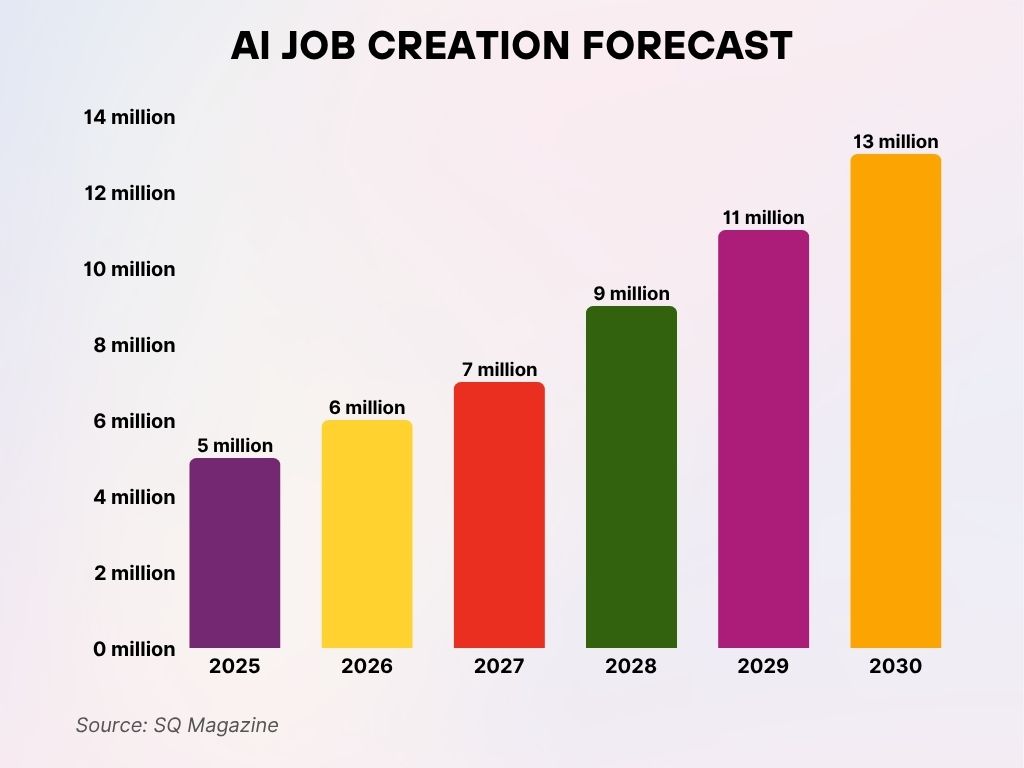
Global AI Job Creation Trends
- By Q2 2025, AI has contributed to net job creation in 164 countries, with developing economies accounting for 33% of those gains.
- The global AI job market is projected to be worth $1.84 trillion by the end of 2025, reflecting both direct and indirect employment impacts.
- Europe reported a 19% increase in AI-related job roles, especially in Germany, France, and the Netherlands.
- In India, AI-related employment has grown by 42% year-over-year in 2025, driven by the rise of generative AI service providers.
- Sub-Saharan Africa saw AI-driven job creation rise by 12% in 2025, marking the highest growth rate ever recorded for the region.
- The Asia-Pacific region accounted for 47% of global AI job creation by mid-2025, with China and South Korea leading investments in AI infrastructure.
- The United States still holds the largest share of AI employment, with 18% of global AI-related jobs located domestically as of 2025.
- Latin America’s AI-driven job growth hit 17% in 2025, with fintech and language processing startups fueling much of the demand.
- Saudi Arabia and the UAE have invested over $3.2 billion in AI education and workforce programs by 2025, resulting in a combined 28% increase in regional AI jobs.
AI Job Landscape: Creation vs. Displacement
- By 2025, a total of 97 million new jobs are expected to be created due to the shift between humans and machines.
- At the same time, 85 million jobs will likely be displaced, driven by automation and AI technologies.
- The top 10 growing job roles include:
- Data Analysts and Scientists
- AI and Machine Learning Specialists
- Big Data Specialists
- Digital Marketing and Strategy Specialists
- Process Automation Specialists
- Business Development Professionals
- Digital Transformation Specialists
- Information Security Analysts
- Software and Applications Developers
- Internet of Things (IoT) Specialists
- The top 10 declining job roles include:
- Data Entry Clerks
- Administrative and Executive Secretaries
- Accounting and Payroll Clerks
- Accountants and Auditors
- Assembly and Factory Workers
- Admin Managers
- Customer Service Workers
- Operations Managers
- Mechanics and Machinery Repairers
- Stock-Keeping Clerks
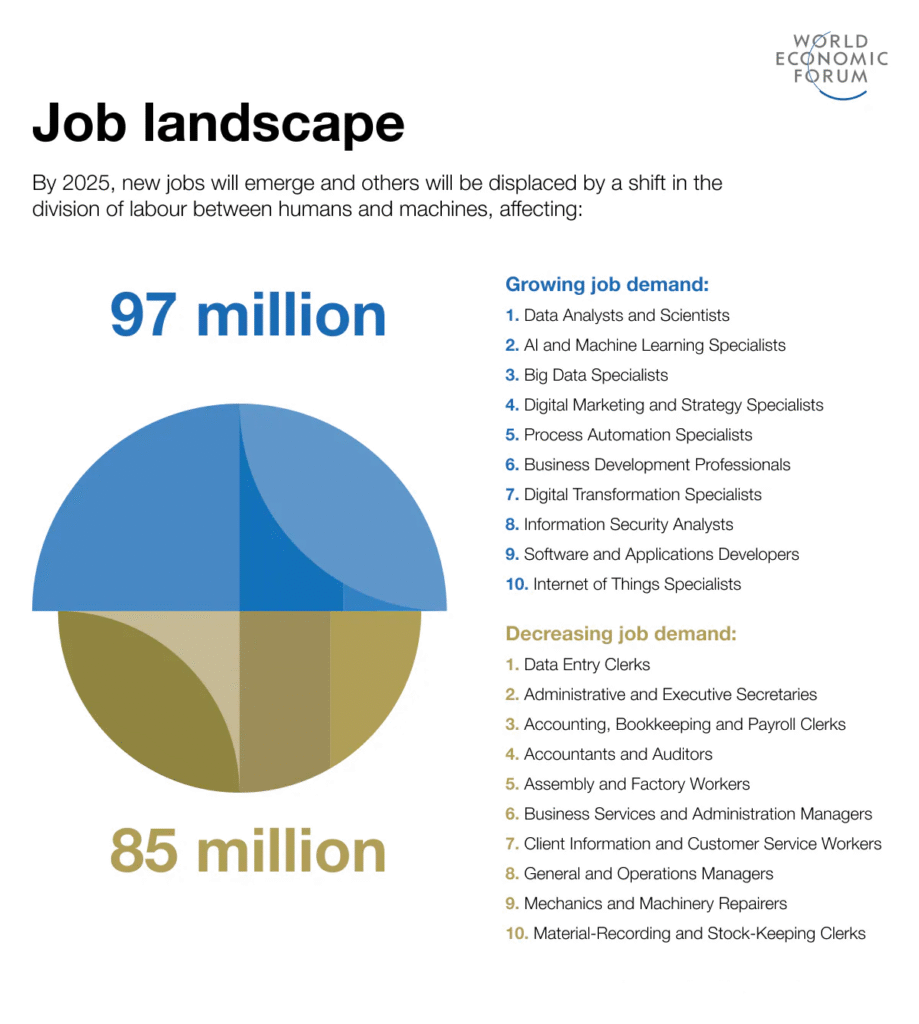
Sector-Wise Distribution of AI-Created Jobs
- In 2025, the healthcare sector added over 640,000 AI-driven roles, including diagnostics automation, predictive modeling, and virtual health assistants.
- Financial services created approximately 470,000 new AI-related jobs globally in 2025, focused on fraud detection, trading algorithms, and risk modeling.
- Manufacturing witnessed the emergence of 620,000 AI jobs in 2025, primarily in robotics coordination, predictive maintenance, and AI-enabled quality control.
- The retail sector hired over 360,000 AI specialists in 2025 to manage supply chain intelligence, customer behavior prediction, and smart inventory systems.
- In education, AI job creation hit 210,000 roles in 2025, including instructional AI designers and personalized learning system developers.
- The transportation and logistics industry added 315,000 AI jobs by mid-2025, as autonomous delivery and routing platforms gained widespread use.
- Energy and utilities integrated AI to such an extent in 2025 that 188,000 new jobs were formed, focusing on smart grid optimization and predictive outage prevention.
- Legal tech saw a 21% year-over-year increase in AI-related jobs by 2025, mostly in document analysis, compliance automation, and legal research augmentation.
- Hospitality and travel sectors introduced 96,000 AI-enhanced roles in 2025, including virtual concierge services, dynamic pricing strategists, and traveler intent analysis.
- Cybersecurity firms created more than 210,000 AI-integrated roles in 2025, reflecting the growing need for real-time anomaly detection and threat response systems.
- Media and entertainment companies generated 143,000 AI-centric jobs in 2025, particularly in deepfake detection, personalized content engines, and AI-led content creation.
Regional Breakdown of AI Job Growth
- In North America, the AI job market grew by 24% in 2025, with the U.S. adding over 280,000 net new AI roles.
- Canada saw a 33% growth in AI hiring year-over-year, supported by provincial investment funds targeting deep tech and clean AI startups.
- Europe created over 850,000 AI-related jobs in 2025, with Germany, France, and Sweden leading in AI integration across industry verticals.
- Eastern Europe accounted for 11% of Europe’s AI job growth in 2025, driven by outsourcing hubs in Poland and Romania specializing in AI annotation.
- The Asia-Pacific region led global growth with 1.1 million new AI jobs added in 2025, particularly in China, India, and South Korea.
- India alone produced over 490,000 AI roles in 2025, making it the largest AI job generator among developing economies.
- Australia and New Zealand saw a 17% rise in AI job creation in 2025, with healthtech and agritech emerging as key sectors.
- The Middle East invested heavily in AI development zones, resulting in over 128,000 AI-related hires across Saudi Arabia, the UAE, and Qatar in 2025.
- In Africa, South Africa, Nigeria, and Kenya were regional AI job leaders, with combined job growth of 14% year-over-year in 2025.
- South America added approximately 230,000 AI jobs in 2025, with Brazil and Chile spearheading the adoption of AI in agriculture and logistics.
Top Degrees Required for AI Engineers
- Engineering tops the list, appearing in 69.3% of all AI engineer job postings.
- Computer Science is in high demand, mentioned in 61.0% of listings.
- Machine Learning degrees are cited in 42.4% of roles, highlighting growing specialization.
- Architecture (not just building design but systems thinking) appears in 25.2% of job descriptions.
- Artificial Intelligence is directly mentioned in 23.8% of postings.
- Data Science is relevant in 21.7% of roles, showing the importance of analytical skills.
- Mathematics degrees are valued in 14.6% of positions.
- Statistics follow with 10.5%, useful for data modeling and predictive systems.
- Data Engineering is required in 7.9% of jobs, reflecting the need to manage large-scale data pipelines.
- Physics (6.8%) and Chemistry (3.9%) appear less often but are still useful in niche AI applications.
- Data Analytics, Information Systems, and Economics trail with 1.4%, 1.1%, and 0.4%, respectively, more complementary than core.
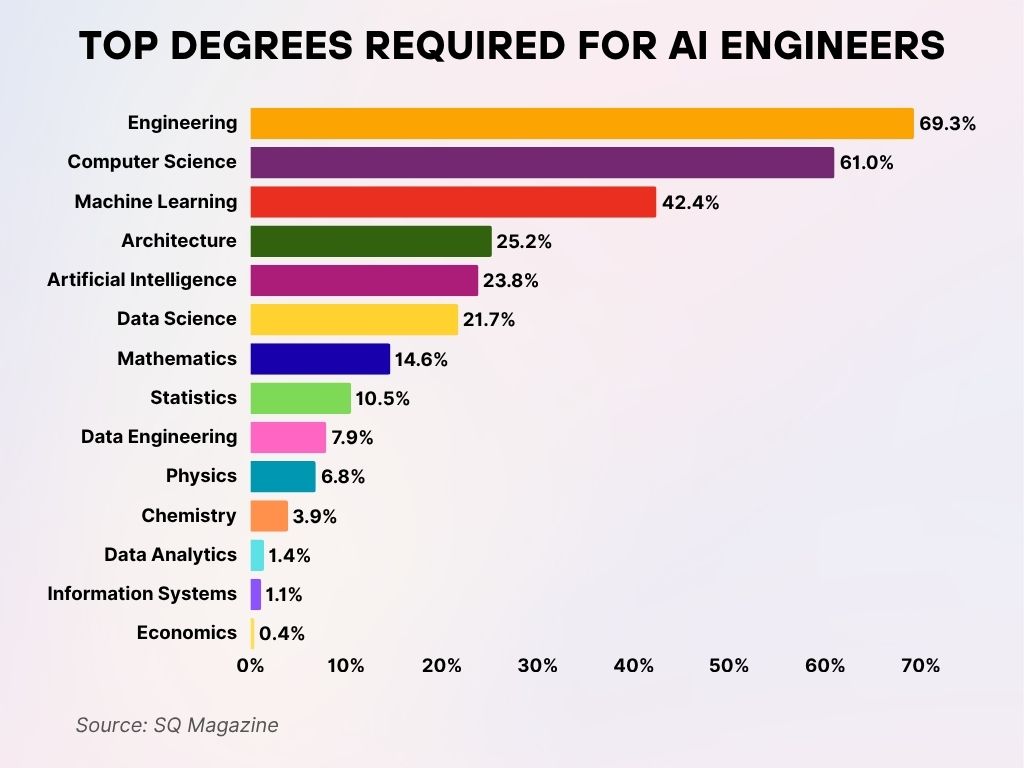
Startups and New Businesses Fueled by AI
- In 2025, AI-enabled startups were responsible for 13% of total new business registrations in the U.S.
- Over 54,000 new startups globally launched with AI as their core function by mid-2025, spanning fintech, edtech, biotech, and creative industries.
- Generative AI tools were cited as a foundational asset by 62% of tech founders who started companies between Q3 2024 and Q2 2025.
- In Silicon Valley, more than 4,500 AI-first startups were formed in 2025, representing a 28% year-over-year increase.
- Europe’s AI startup ecosystem added over 9,000 new ventures in 2025, with Germany and Estonia leading in venture-backed AI innovation.
- India witnessed a 48% spike in AI startup formation year-over-year, with over 12,000 new companies launched in the AI services domain.
- AI-powered creator economy platforms led to the formation of 7,000+ micro-startups globally in 2025, built around custom LLM tools and video synthesis.
- Government-backed incubators in China supported 18,000+ AI-focused entrepreneurs in 2025, particularly in robotics, health, and language models.
- Africa’s AI startup sector reached new highs in 2025, with over 1,800 new ventures formed, 73% more than the previous year.
- Startup job creation from AI companies totaled 2.3 million roles globally in 2025, with 36% of those roles in software engineering and ML ops.
AI Upskilling and Workforce Transition
- In 2025, 46% of companies worldwide offered internal AI upskilling programs.
- More than 58 million workers globally completed at least one AI certification or course in 2025, driven by job transition mandates.
- LinkedIn Learning reported a 62% increase in AI-related course enrollments in the first half of 2025 compared to the previous year.
- Coursera’s AI foundations track saw 14.2 million enrollments in 2025, with over half from mid-career professionals.
- In the United States, government-backed training grants supported 120,000 displaced workers in earning AI-focused certifications by Q2 2025.
- Vocational retraining centers across Europe saw a 39% uptick in AI-skills enrollment in 2025, particularly in Spain and the Netherlands.
- Asia-Pacific accounted for 44% of global AI reskilling activity in 2025, reflecting the region’s proactive stance on talent development.
- IBM’s SkillsBuild program expanded in 2025, supporting over 1.2 million learners in developing core AI competencies globally.
- AI bootcamps across the U.S. and Canada experienced 51% growth in 2025 participation, driven by demand from career switchers.
- The average cost of AI upskilling per employee dropped to $1,400 in 2025, a 19% reduction due to increased open-access platforms.
Job Sectors Most at Risk from Automation
- Administration tops the risk chart, with 26% of jobs at risk due to automation and AI-driven tools.
- Customer service follows, with 20% of roles facing potential disruption.
- Production work is the third most vulnerable, with 13% of jobs at risk from machines and robotics.
- The legal sector sees a smaller but notable risk at 6%, primarily in repetitive or clerical tasks.
- Education roles have a relatively low risk at 5%, reflecting the human-centric nature of the field.
- Jobs in creativity and arts face only 4% risk, showcasing AI’s limitations in emotional and original expression.
- Management jobs are the least at risk, with only 3%, as strategic thinking and leadership remain largely human-driven.
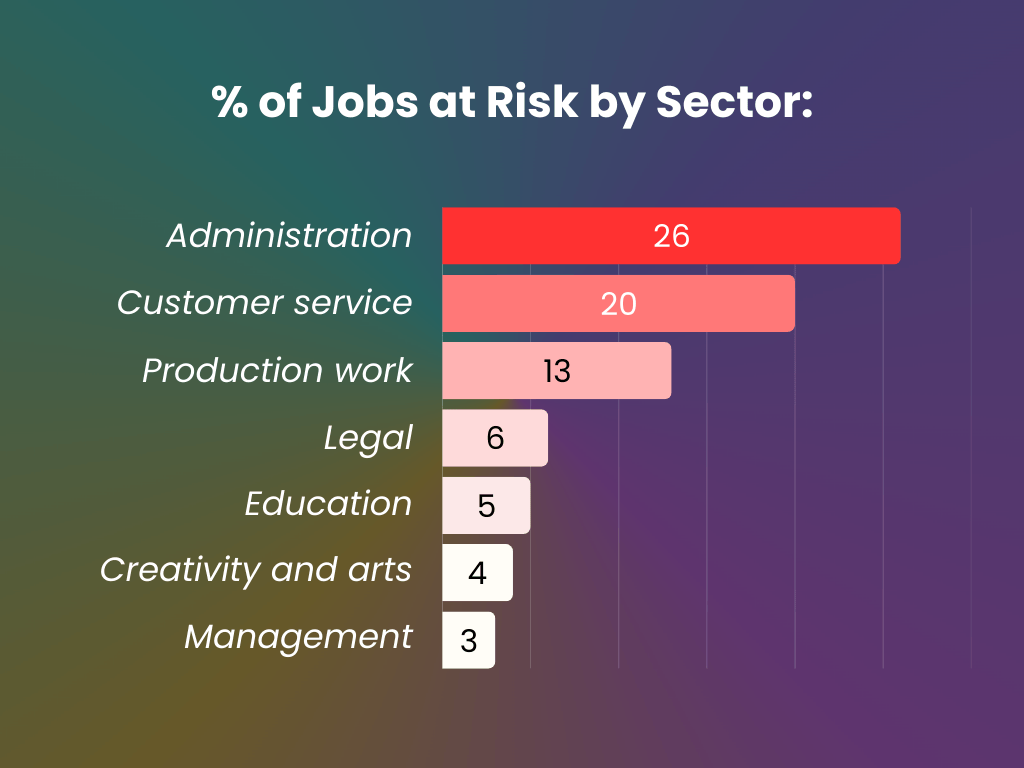
AI’s Impact on Traditional Employment vs. Net Job Gains
- By 2025, AI-driven automation is estimated to have displaced 85 million jobs, yet created a net positive gain of 97 million new roles worldwide.
- In 2025, 59% of roles impacted by AI in the United States were augmented rather than eliminated, reflecting a shift toward human-AI collaboration.
- The retail sector saw the displacement of 300,000 low-skill roles but added 420,000 AI-enhanced positions, leading to a net gain of 120,000 jobs.
- Accounting and finance experienced a 12% role reduction, while simultaneously growing AI audit, modeling, and compliance roles by 18% in 2025.
- The logistics and transportation sector automated 26% of its clerical roles in 2025, but added 210,000 new AI-integrated positions in real-time routing, fleet optimization, and predictive analytics.
- Customer support centers globally eliminated 1.6 million traditional jobs by 2025, yet added 1.9 million in conversational AI design, chat management, and AI monitoring.
- Telemedicine and health tech AI implementations replaced manual data entry and scheduling roles but created almost 2x more jobs in AI-assisted diagnostics and care navigation.
- Manufacturing saw a net 9% increase in jobs as of 2025, due to smart automation requiring more AI technicians and robotics supervisors.
- In education, AI reduced administrative roles by 8%, but drove a 13% increase in demand for curriculum engineers and AI-integrated learning designers.
- Blue-collar AI augmentation resulted in productivity gains without wholesale job losses; 72% of AI integrations in trades were supportive in nature in 2025.
Corporate Investments in AI Talent Development
- In 2025, 61% of Fortune 1000 companies increased spending on AI talent development.
- Corporate budgets for AI workforce development averaged $6.2 million in 2025, marking a 24% year-over-year increase.
- Amazon, Google, and NVIDIA each launched proprietary AI academies in 2025, aiming to certify over 100,000 employees annually.
- Microsoft invested over $2.1 billion in internal and partner AI training programs globally by mid-2025.
- JP Morgan Chase upskilled 17,000 workers into AI-aligned roles in 2025, particularly in data science and risk automation.
- 80% of corporate training managers in the U.S. now consider AI fluency a “critical workforce skill” as of Q1 2025.
- Salesforce’s Trailhead platform issued over 1.8 million AI badges to users in 2025, supporting cross-functional skilling.
- Tesla retrained over 11,000 assembly employees in AI-integrated robotics and predictive quality systems by May 2025.
- Pfizer and Moderna collaborated to fund AI biotech upskilling for over 2,400 researchers and technicians in 2025.
- 80% of HR executives report that internal AI skill-building programs reduced hiring costs and turnover in 2025.
Jobs Net Growth by 2030
- Big Data Specialists lead the growth chart with a projected 117% increase in job demand from 2025 to 2030.
- AI Specialists follow closely with an 82% rise, highlighting the expanding influence of artificial intelligence.
- Software Developers are expected to grow by 57%, driven by rising digital transformation needs.
- Data Warehousing roles will see a solid 44% net job growth, reflecting the importance of managing large-scale data.
- Data Analysts are set to increase by 41%, as organizations seek deeper insights from data.
- Security Analysts will experience a 39% boost, showing growing concerns over cybersecurity.
- DevOps Engineers round out the list with a 38% rise, as automation and cloud infrastructure continue to scale.
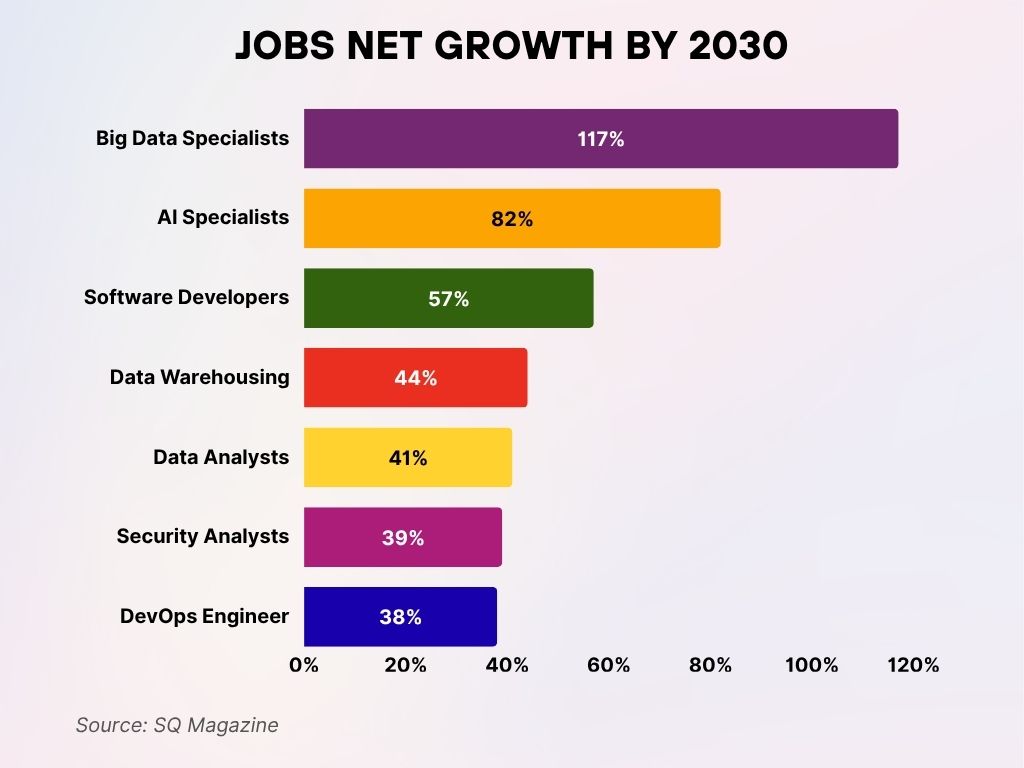
Government and Policy Influence on AI Job Creation
- By 2025, 28 national governments have published formal AI workforce strategies.
- The U.S. Department of Labor funded $1.6 billion in AI workforce transition grants through Q2 2025.
- India’s AI Mission, launched in 2024, has created 620,000 jobs and trained over 3.8 million individuals by mid-2025.
- The EU’s AI Pact supports €3.5 billion in workforce development, fostering AI job mobility across member states in 2025.
- Singapore introduced tax incentives for companies that hire or retrain workers in AI, resulting in a 19% job creation boost in tech sectors in 2025.
- Canada’s Digital Skills Fund allocated $480 million to AI talent development across 14 provinces by mid-2025.
- Brazil’s national AI policy led to the formation of 17 regional AI centers, collectively creating over 87,000 new jobs in 2025.
- Kenya’s AI-Ready Initiative provided government-subsidized AI training for 15,000 youth, creating jobs in labeling, testing, and chatbot building in 2025.
- Germany expanded its “Industrie 4.0” programs to include AI-specific apprenticeships, with over 21,000 placements in 2025.
- The UN AI Capacity Program reached 32 countries in 2025, delivering open-access AI training to 1.3 million people across emerging markets.
AI-Driven Roles in High Demand
- The role of AI prompt engineer became the fastest-growing job title in the U.S. in 2025.
- AI compliance analysts and AI ethicists saw a combined growth of 41% in demand year-over-year in 2025.
- Machine learning operations (MLOps) engineers experienced a 28% spike in hiring during the first quarter of 2025.
- In 2025, demand for natural language processing specialists surged by 32%, driven by generative AI deployments in healthcare and customer service.
- The need for AI trainers and annotators remains strong, with over 400,000 positions globally in 2025, mostly in data labeling for LLMs and autonomous systems.
- AI cybersecurity specialists are projected to be in the top three most in-demand roles in 2025, reflecting concerns over adversarial attacks.
- The video and image synthesis analyst role saw a 23% rise in hiring globally, especially within creative agencies and social media platforms.
- Demand for AI infrastructure architects in cloud environments rose by 19% in 2025, particularly within U.S.-based tech firms and defense contractors.
- Conversational AI developers are in high demand, with over 18,000 open roles posted across global job platforms as of Q2 2025.
- AI-integrated education designers are a rising niche, with a 17% increase in job listings as schools implement AI tools in the curriculum.
Who’s Leading the Global AI Conversation?
- By gender, 58% of global AI discussions are led by men, followed by 31% women, and 11% by other/unknown sources.
- Across generations, Millennials are the most active, contributing 45% of AI-related conversations.
- Gen Z accounts for 26%, while Gen X follows with 21%. Boomers and Other generations each contribute 4%.
- When it comes to industries, Professional services lead with 29% of AI conversations.
- The Tech sector follows at 17%, and Education represents 9%. Other industries make up the remaining 45%.
- In terms of occupations, Executives contribute 18%, Engineers account for 15%, and 67% fall under Other roles.
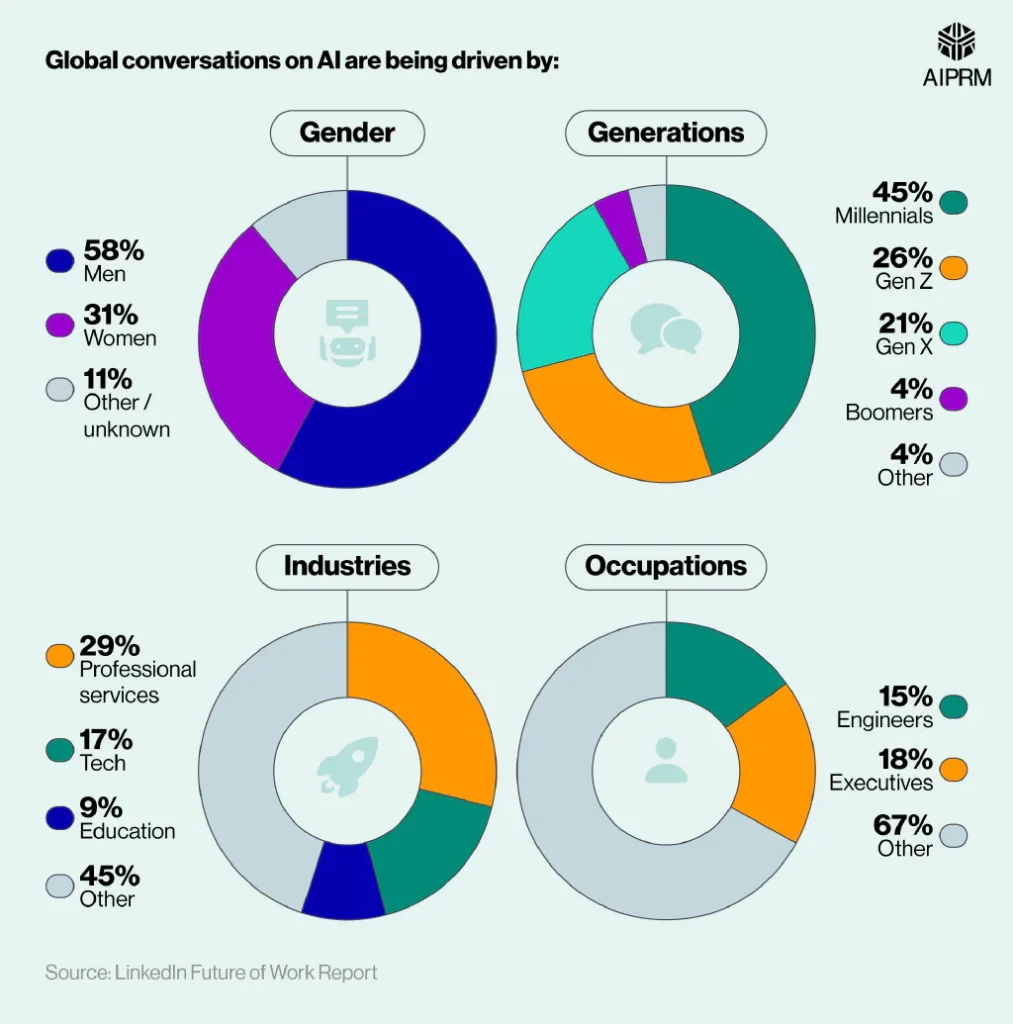
Recent Developments
- In Q1 2025, OpenAI partnered with SAP to develop enterprise-grade AI tools, leading to 12,000+ AI-related job listings within months.
- Google DeepMind released a toolset for automated programming support, leading to new roles in AI code validation and guardrail design.
- Meta launched a multilingual AI assistant, resulting in the hiring of more than 8,000 language model trainers across regions.
- Oracle introduced AI-led business intelligence products, creating demand for data cognition experts and semantic modelers.
- TikTok’s parent company, ByteDance, opened three new AI R&D centers in 2025, contributing to 5,400 high-skill jobs in content moderation and algorithm optimization.
- Apple rolled out on-device AI features in its 2025 product line, creating new job categories like edge AI optimization engineers.
- Zoom added live generative meeting recaps in Q1 2025, hiring over 1,000 AI UX testers and conversation engineers to fine-tune models.
- Salesforce’s Einstein GPT updates prompted the creation of 5,000+ roles in AI-CRM configuration and deployment across client partners.
- Adobe’s Firefly Pro in 2025 drove the hiring of over 7,800 AI designers to enhance generative art controls and human-AI creativity workflows.
- Open-source LLM communities like Hugging Face facilitated over 1,200 part-time and freelance AI job opportunities through public grant programs.
Conclusion
AI isn’t just evolving, it’s restructuring the economy. What was once seen primarily as a disruptive force in automation is now actively shaping the future of human employment. In 2025, we’re seeing a paradigm where AI is creating more jobs than it’s replacing, shifting workers into new, higher-value roles, and equipping economies with the flexibility to adapt.
From regional growth stories to skill-building programs and fresh startup ecosystems, one trend remains clear: the age of AI jobs is not just coming, it’s already here. Those willing to learn, transition, and innovate are reaping the dividends of an intelligence-powered workforce transformation.




